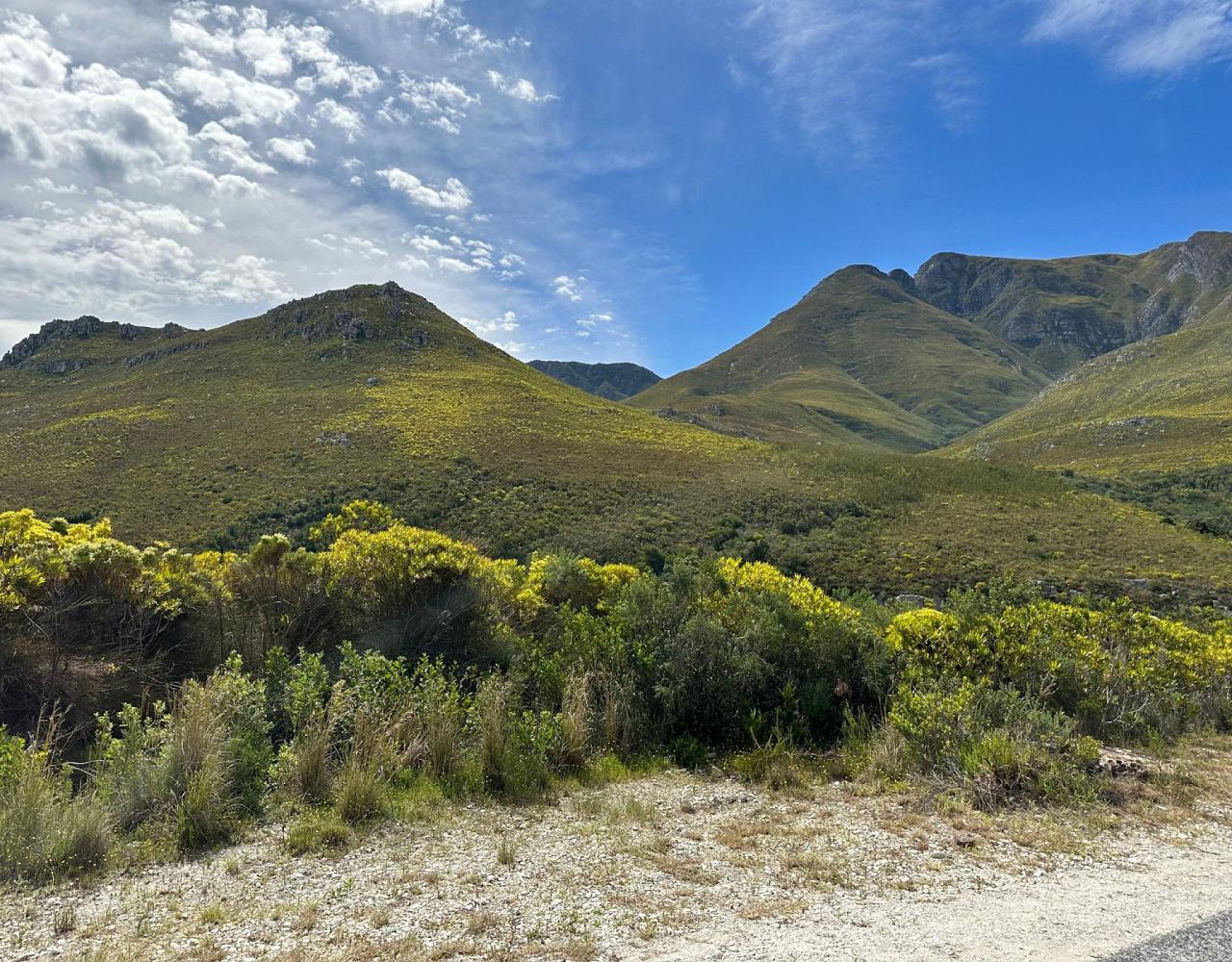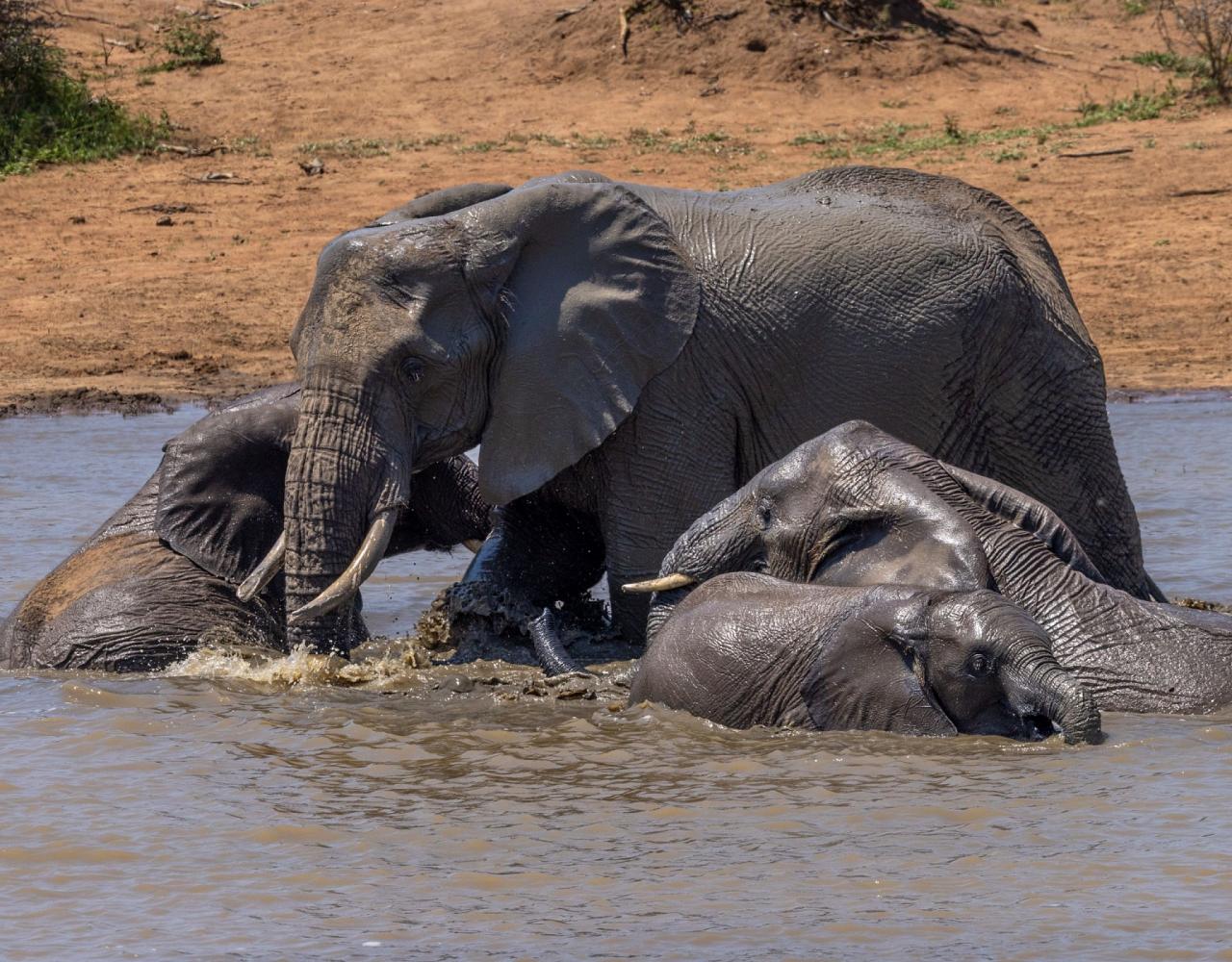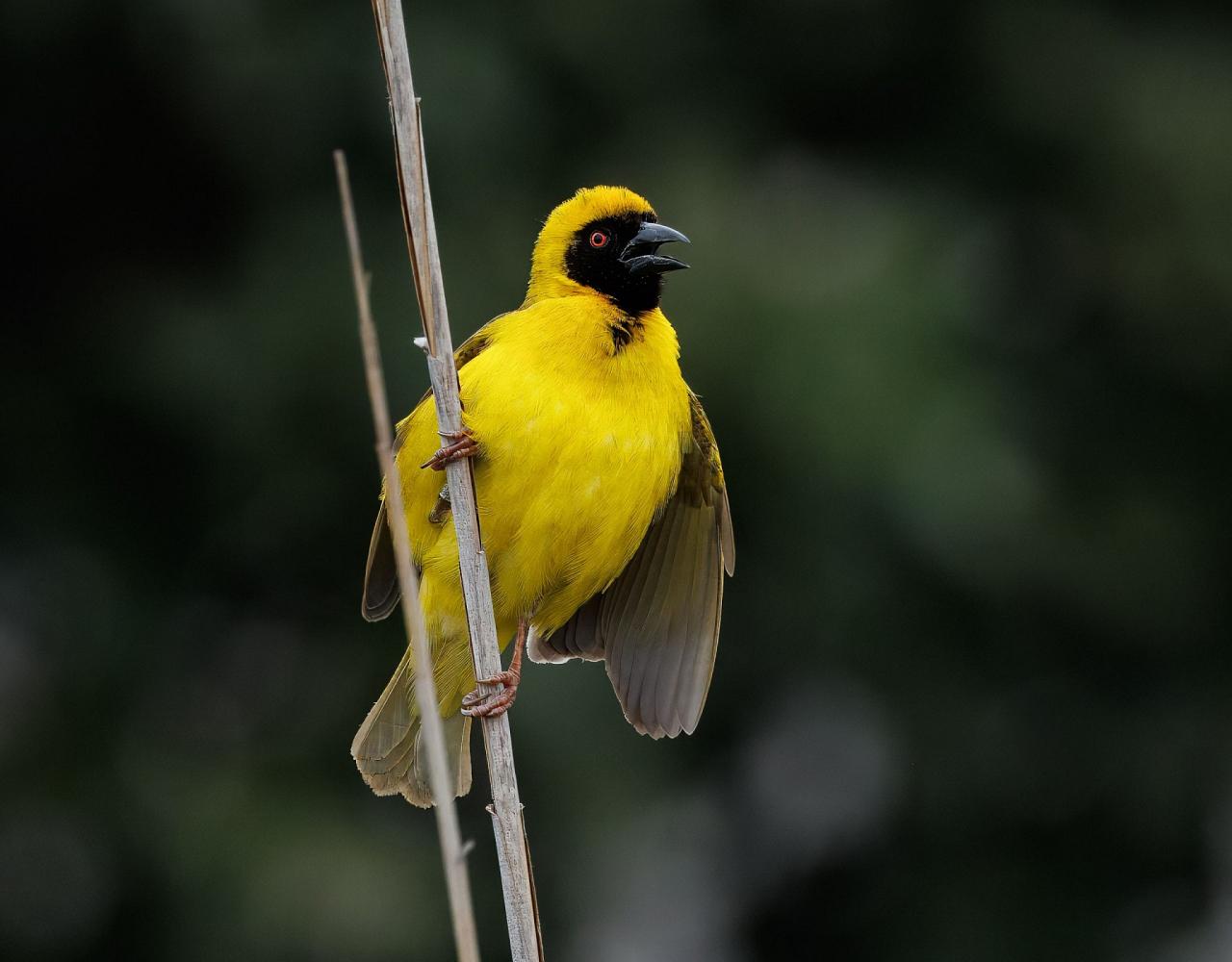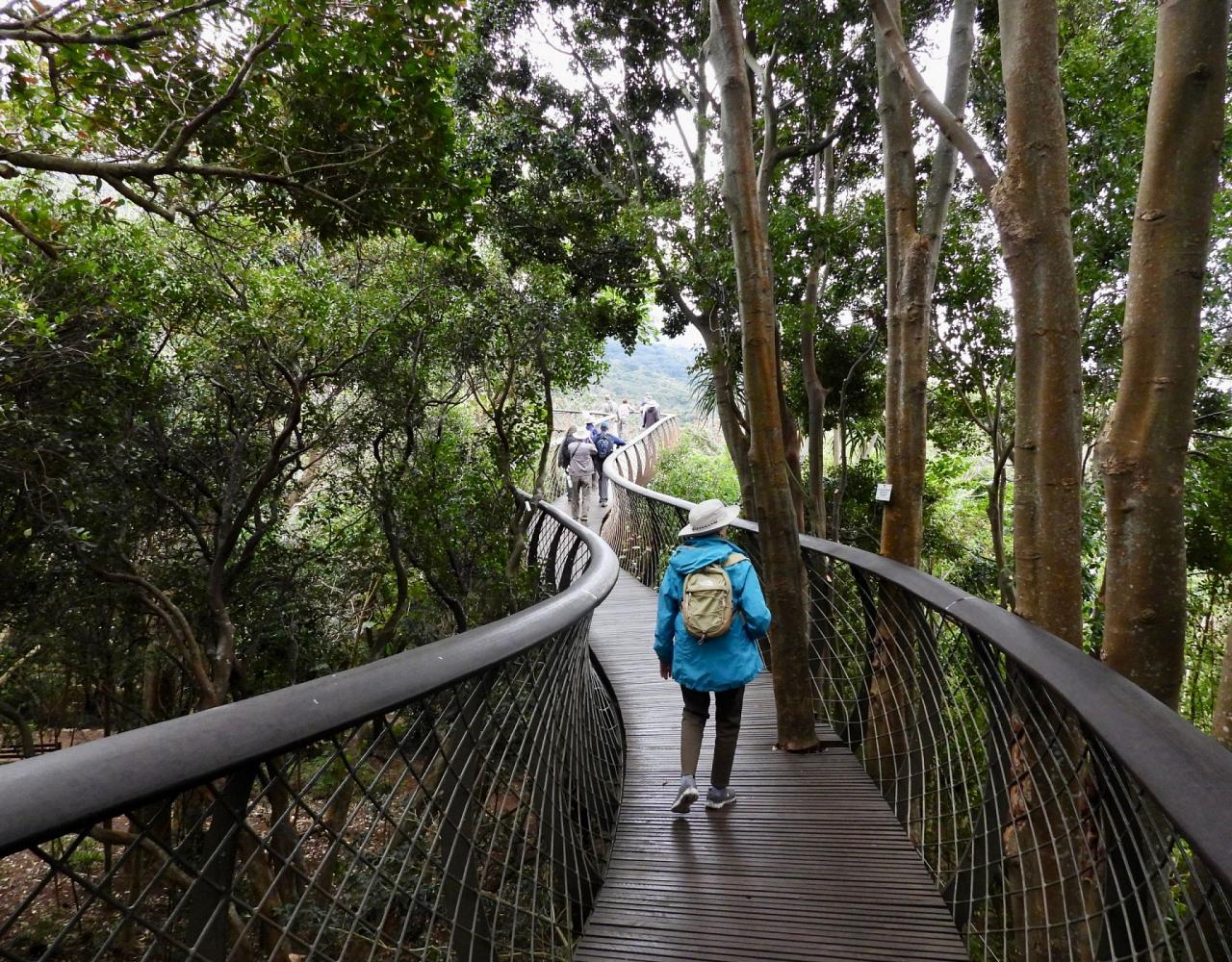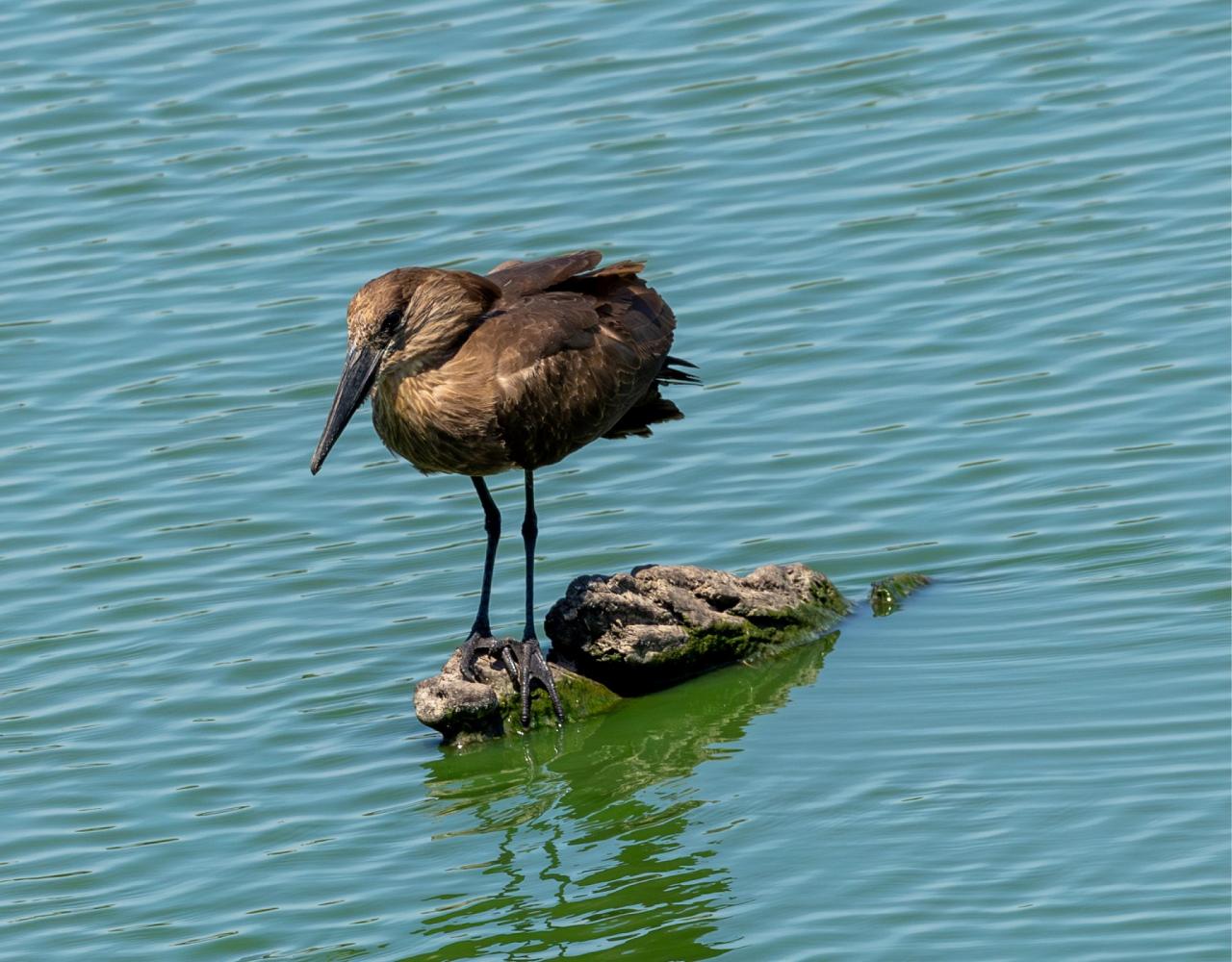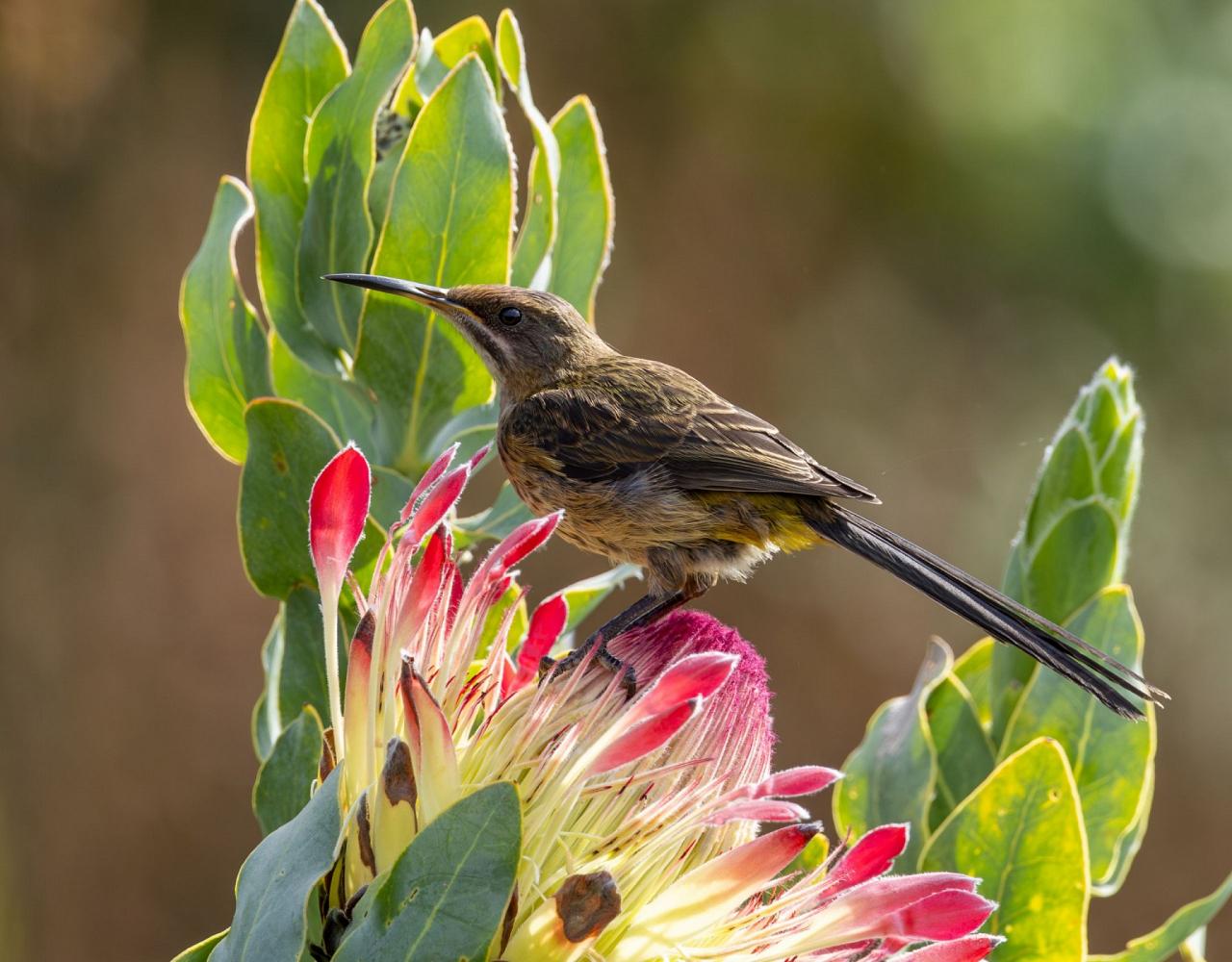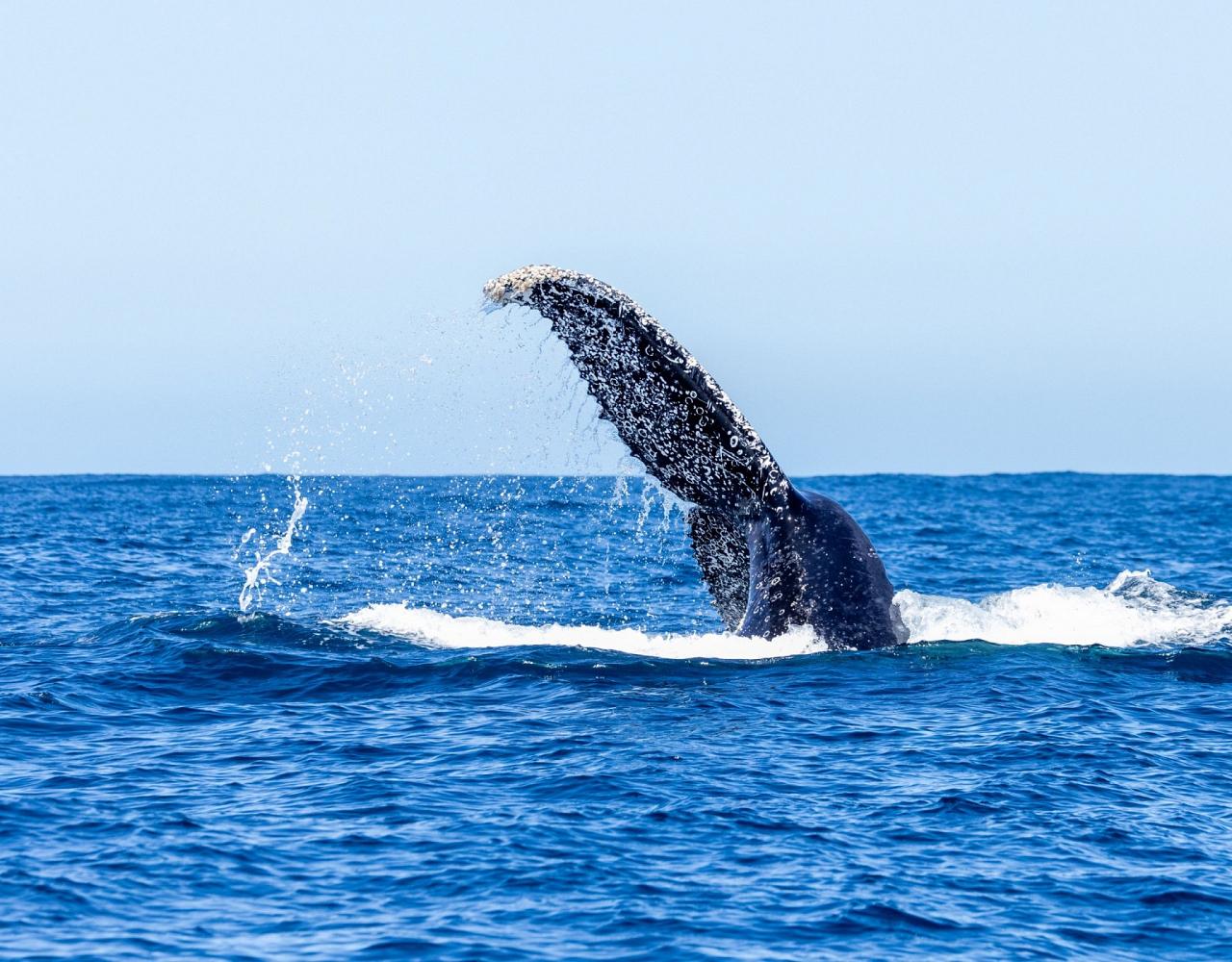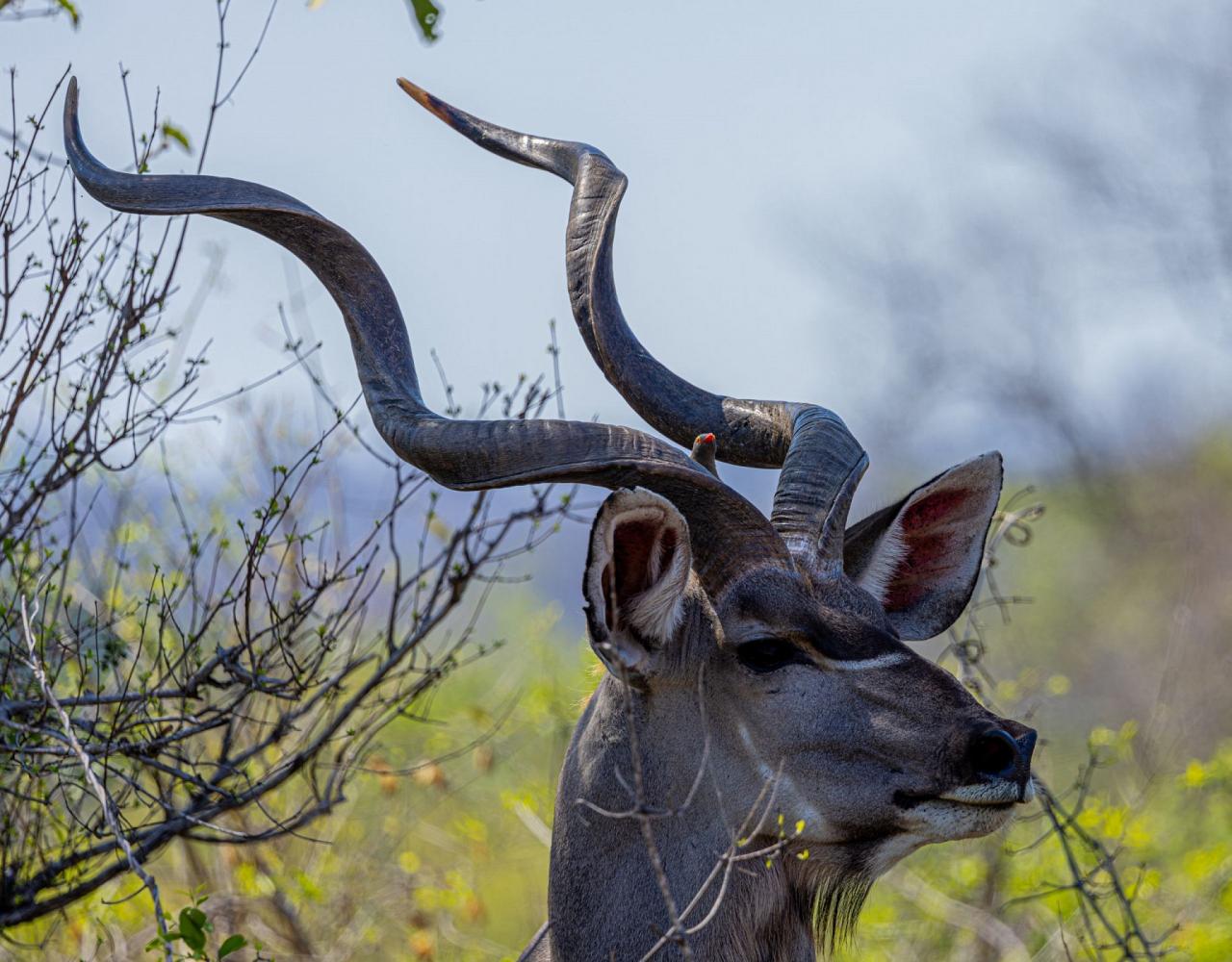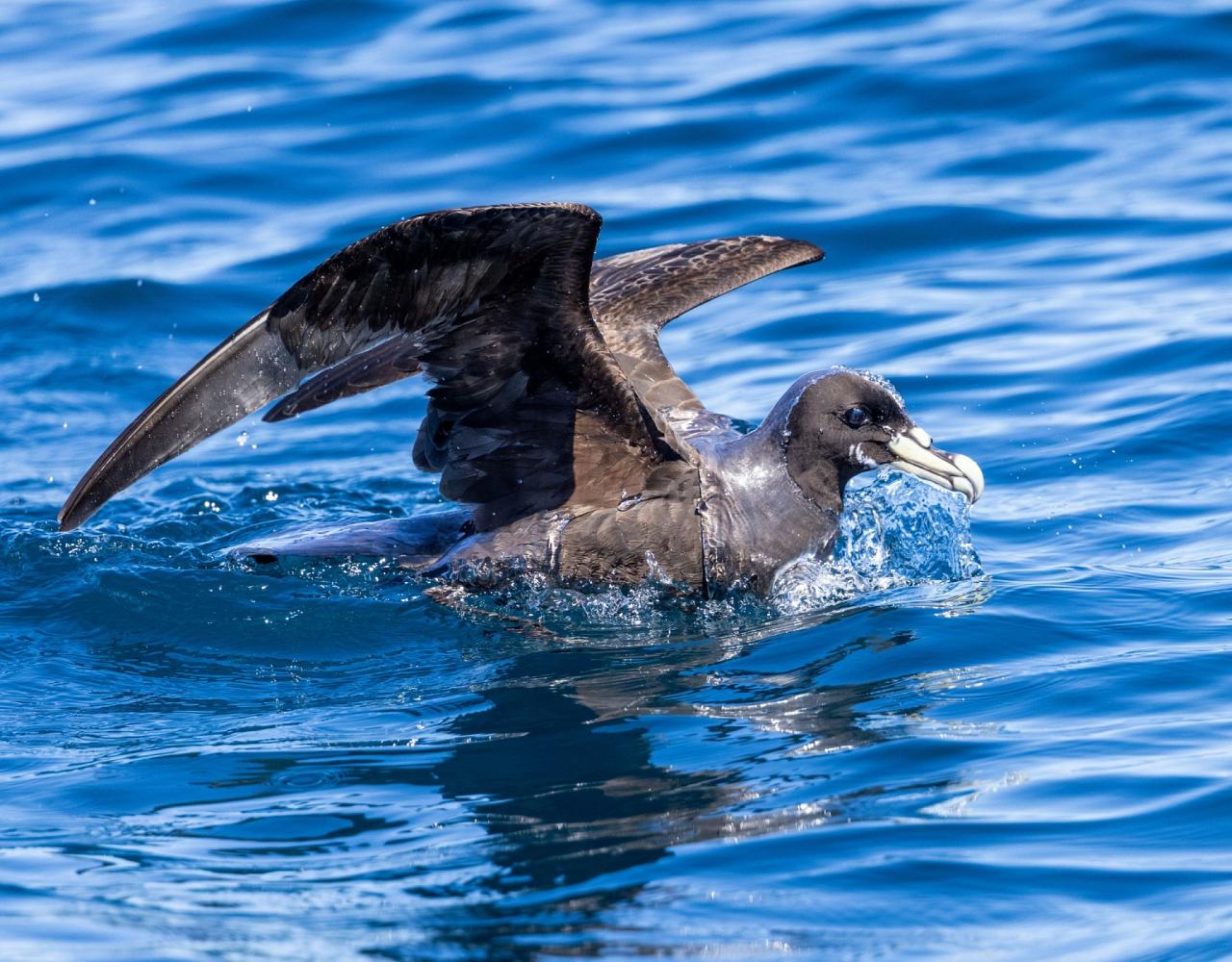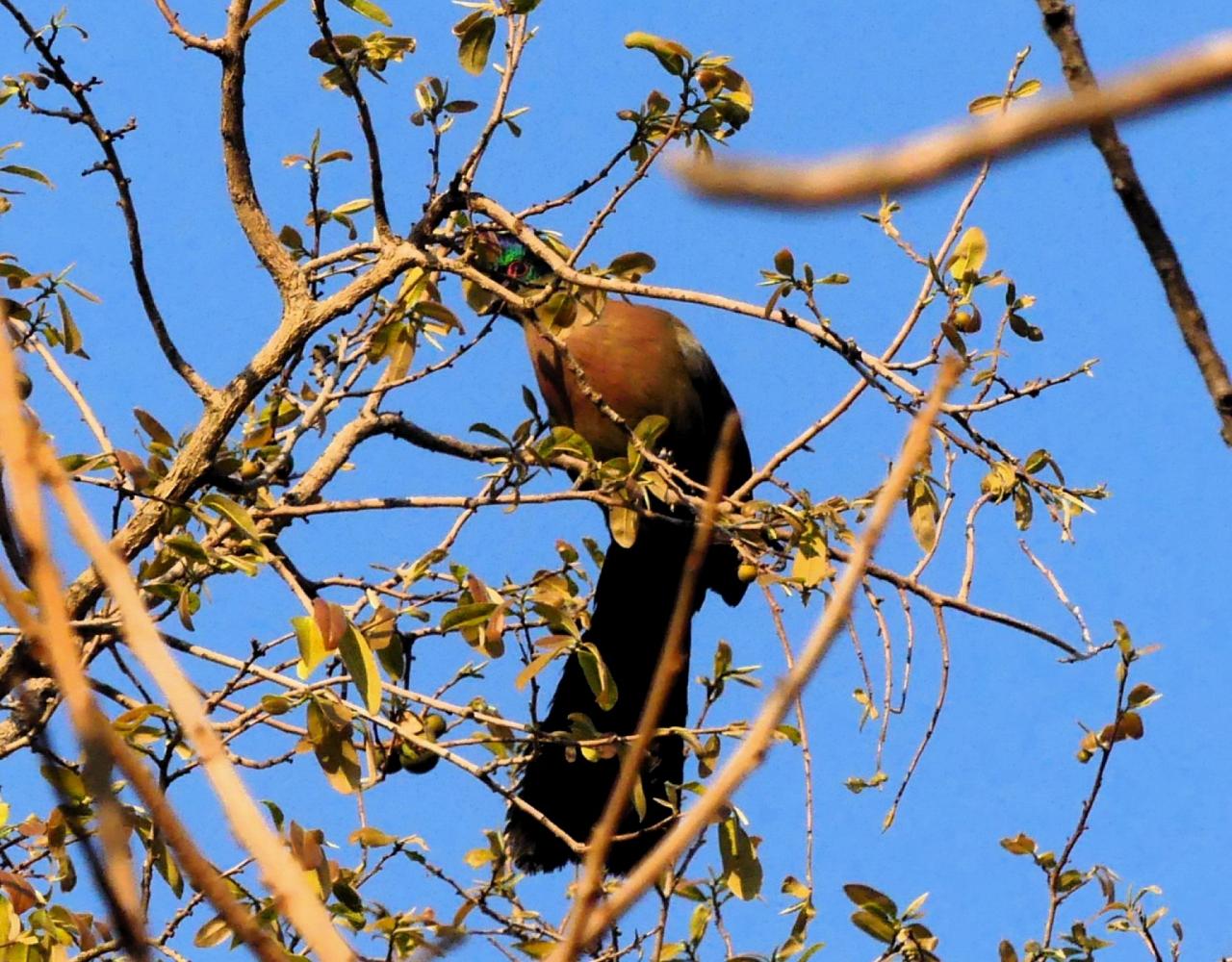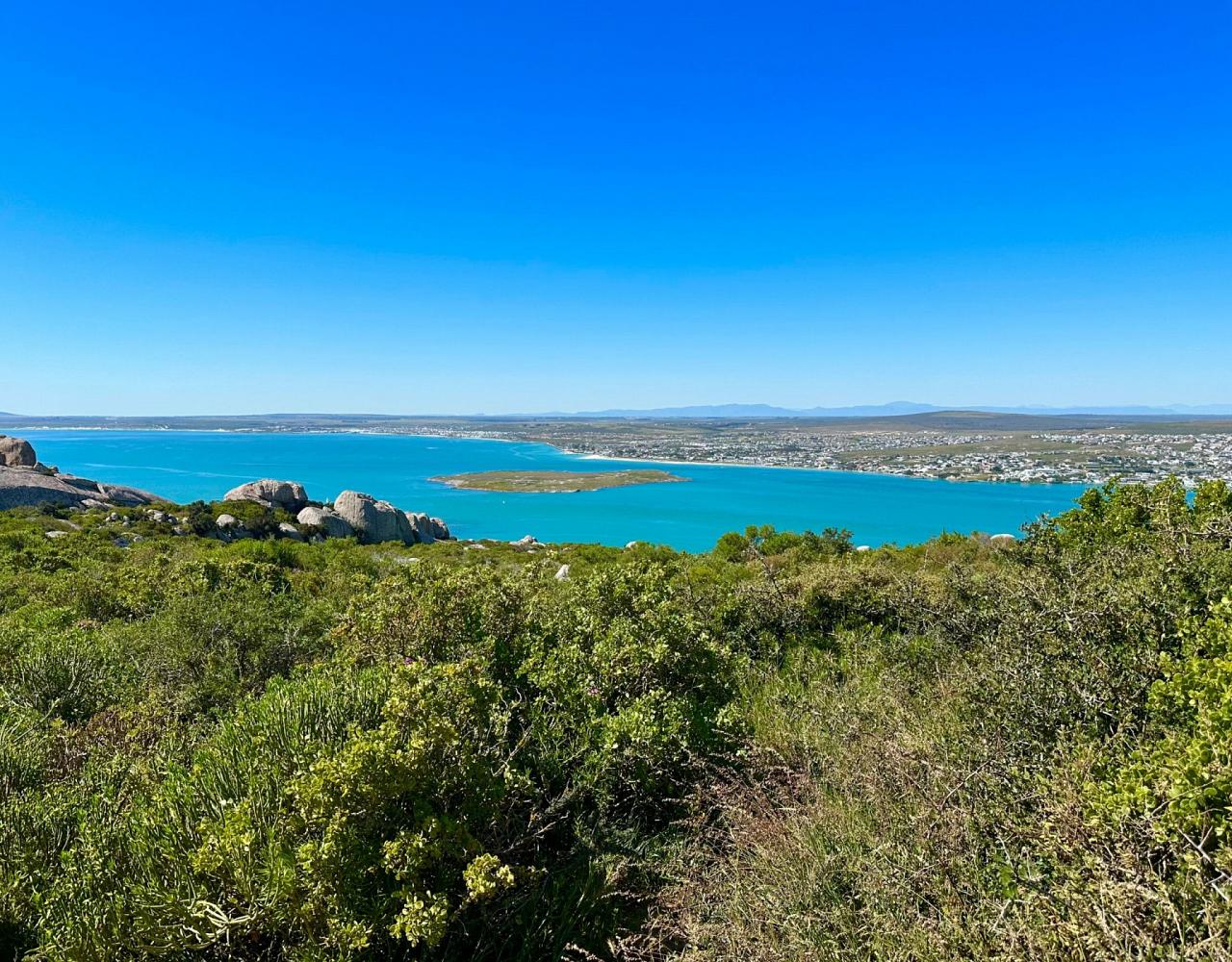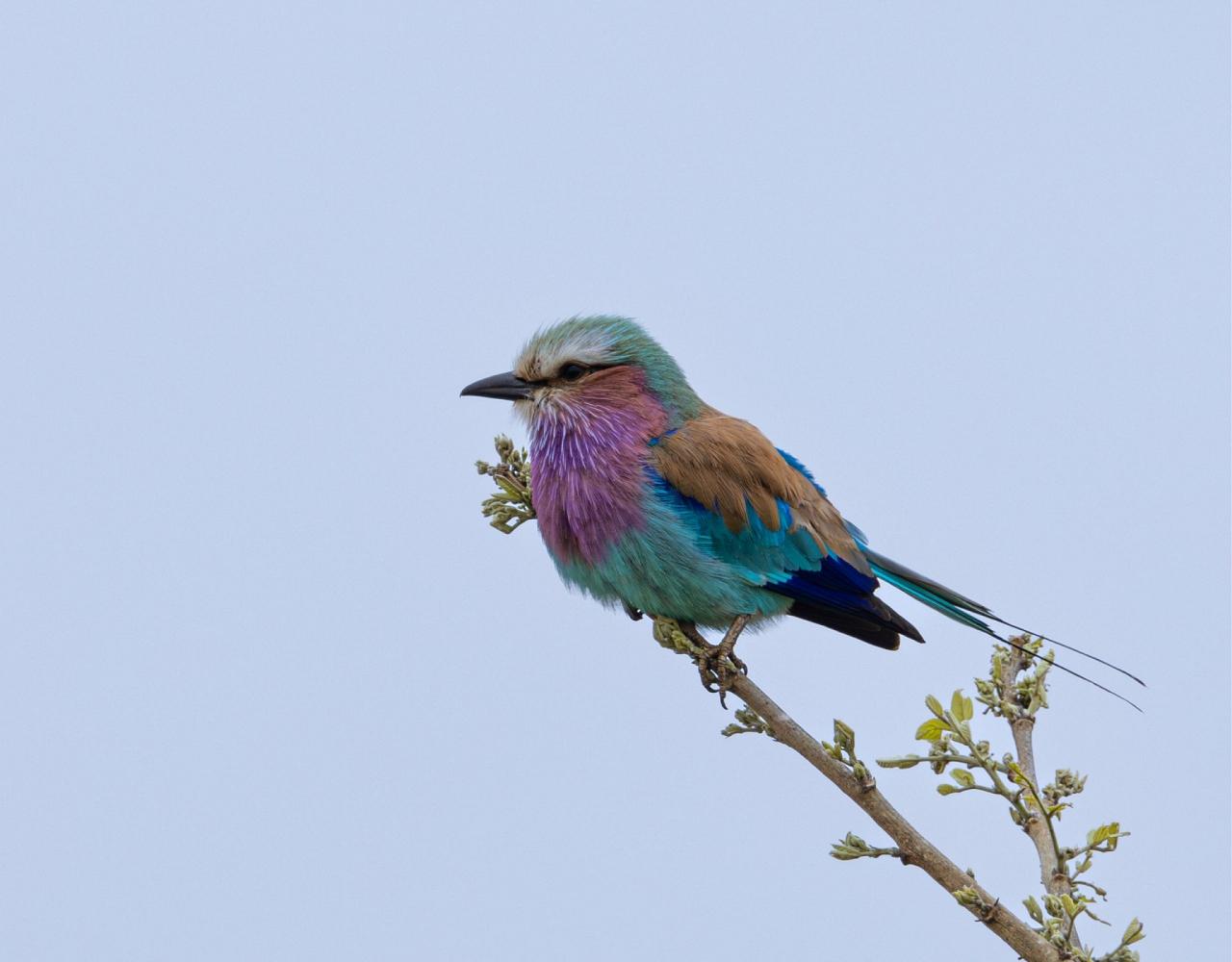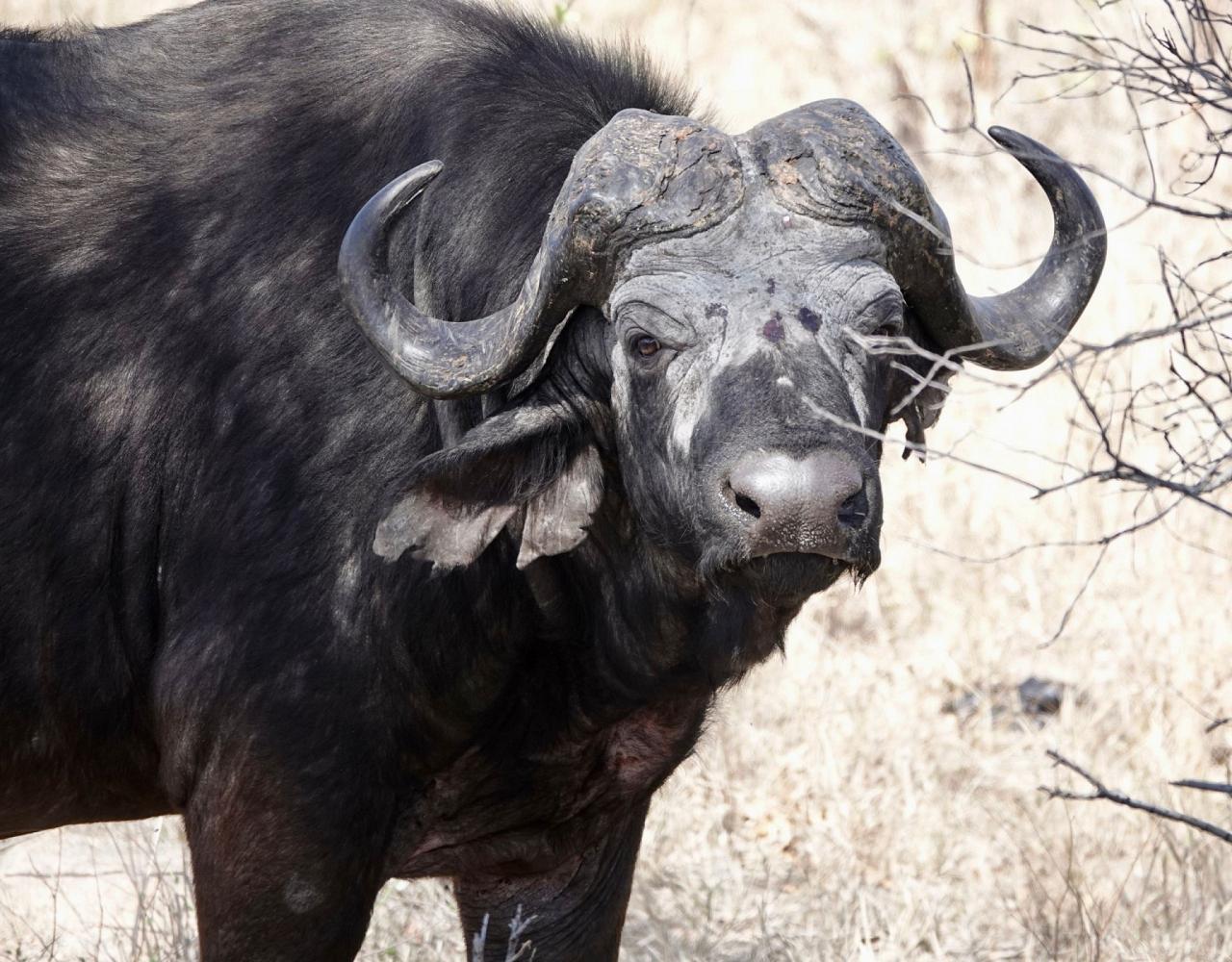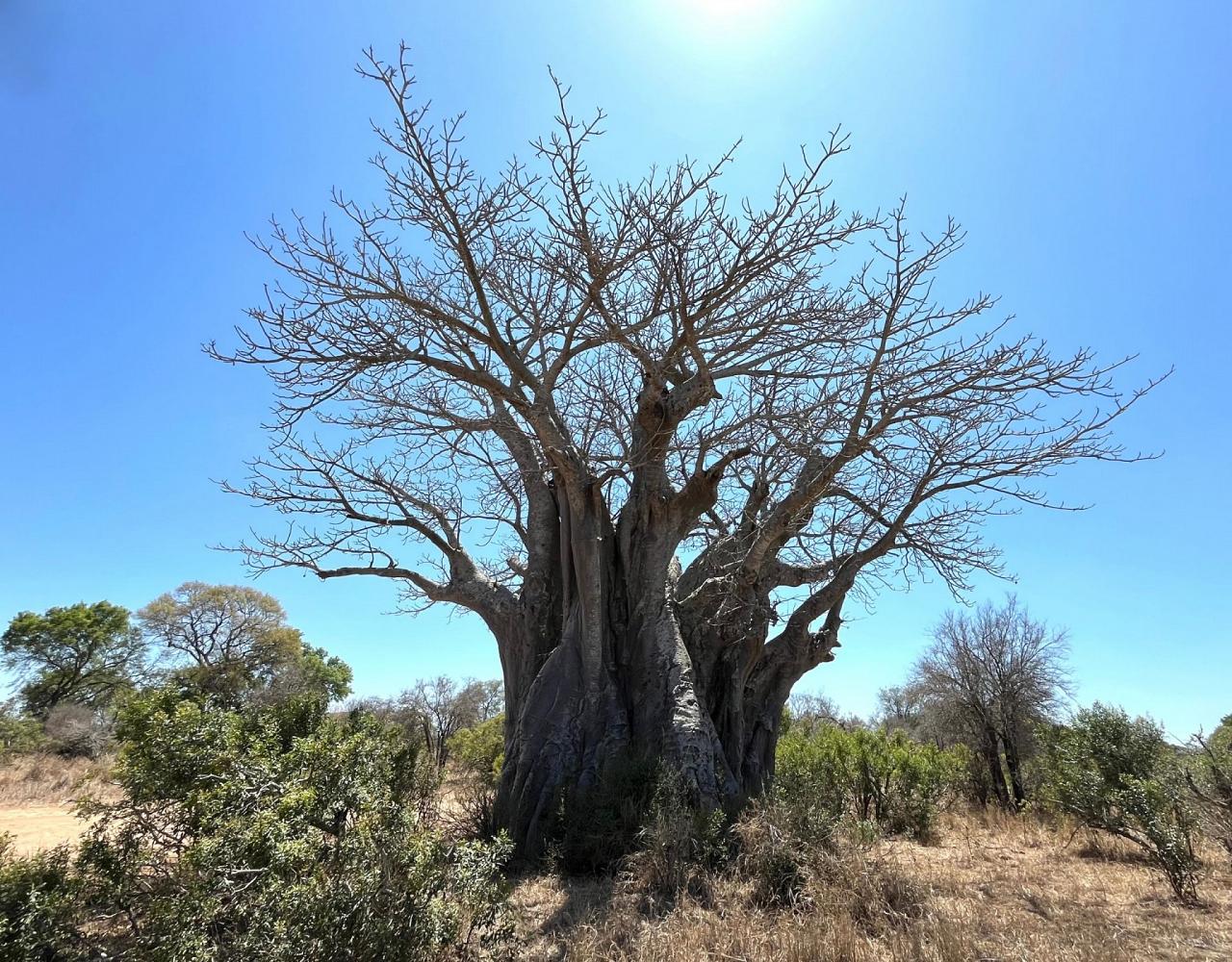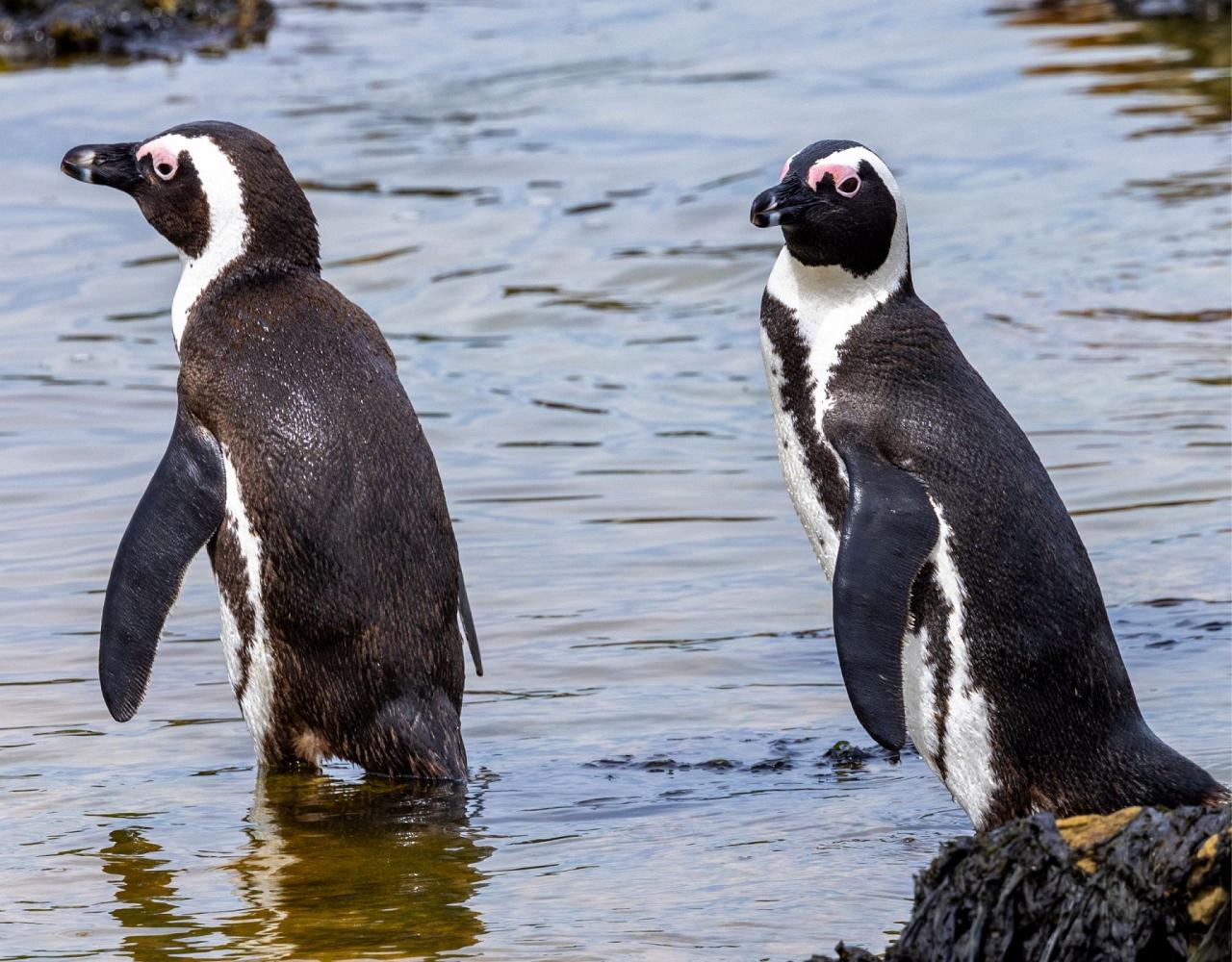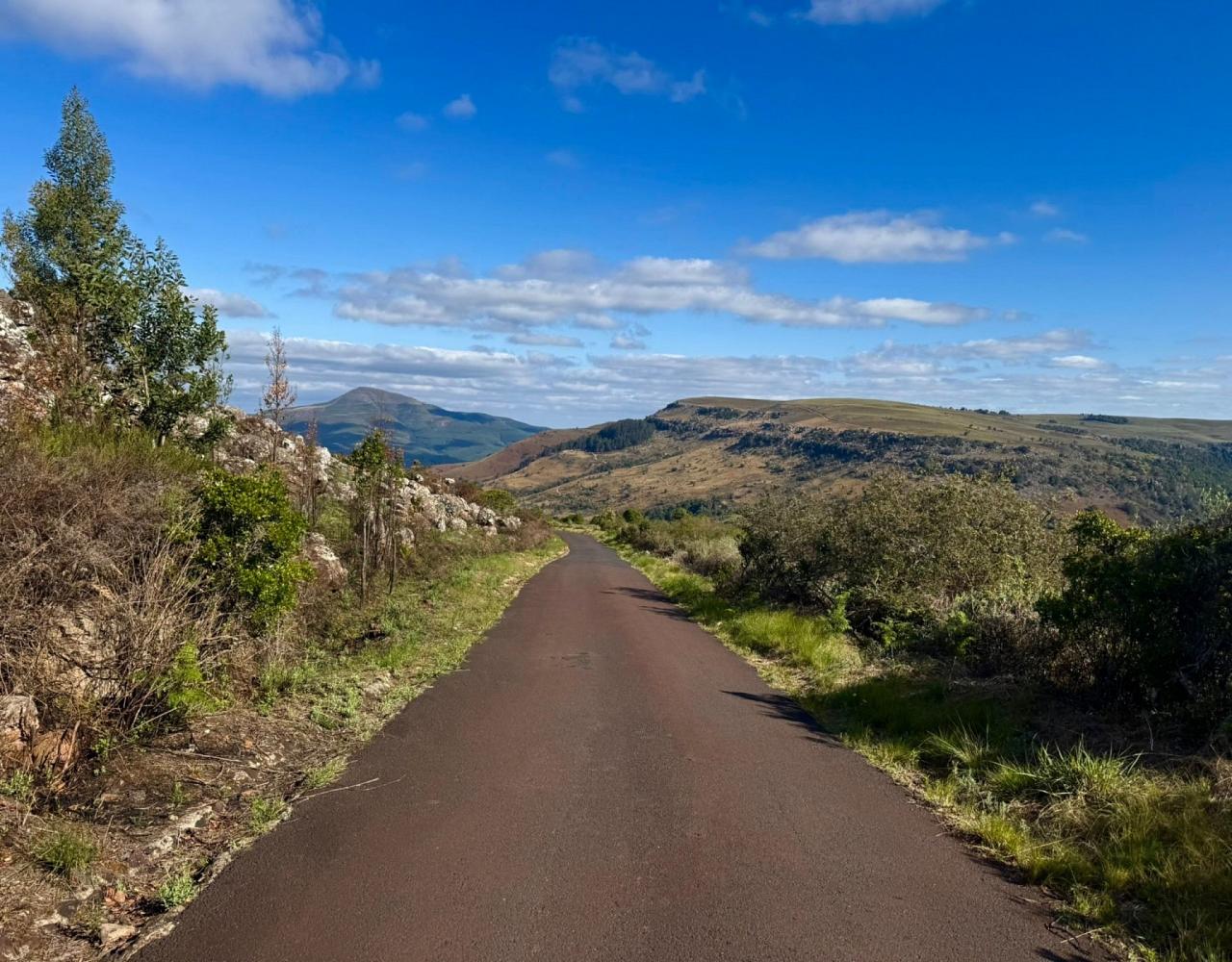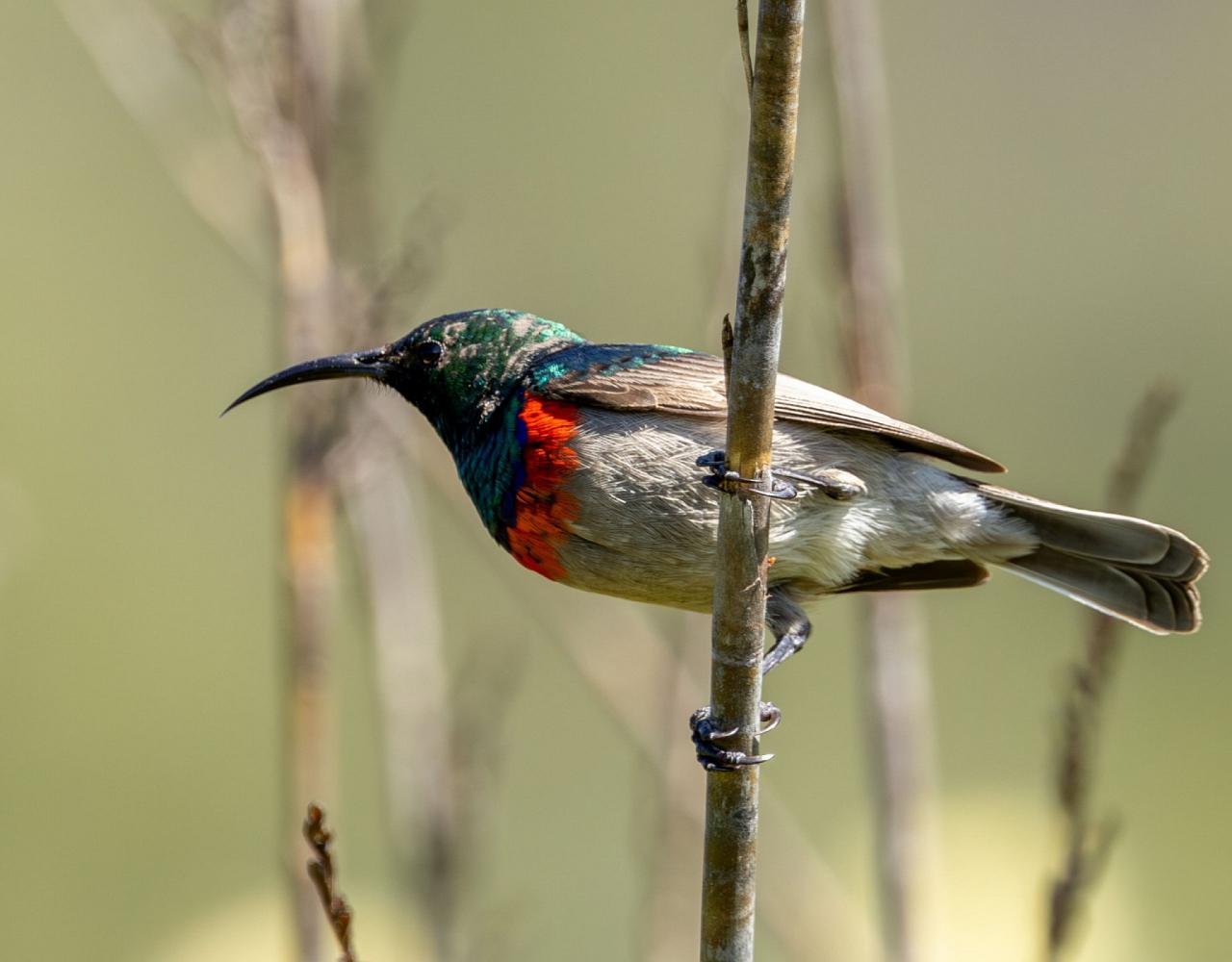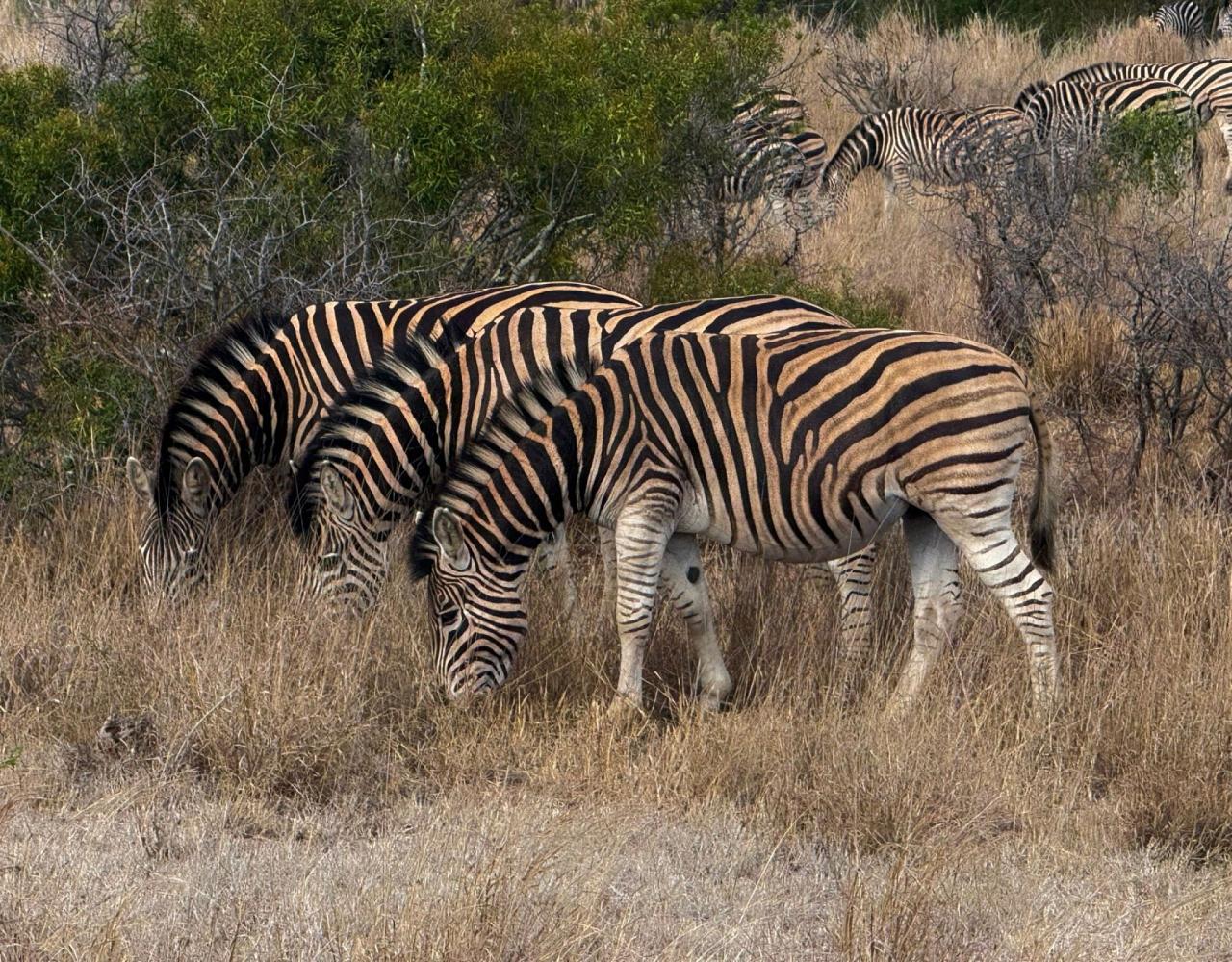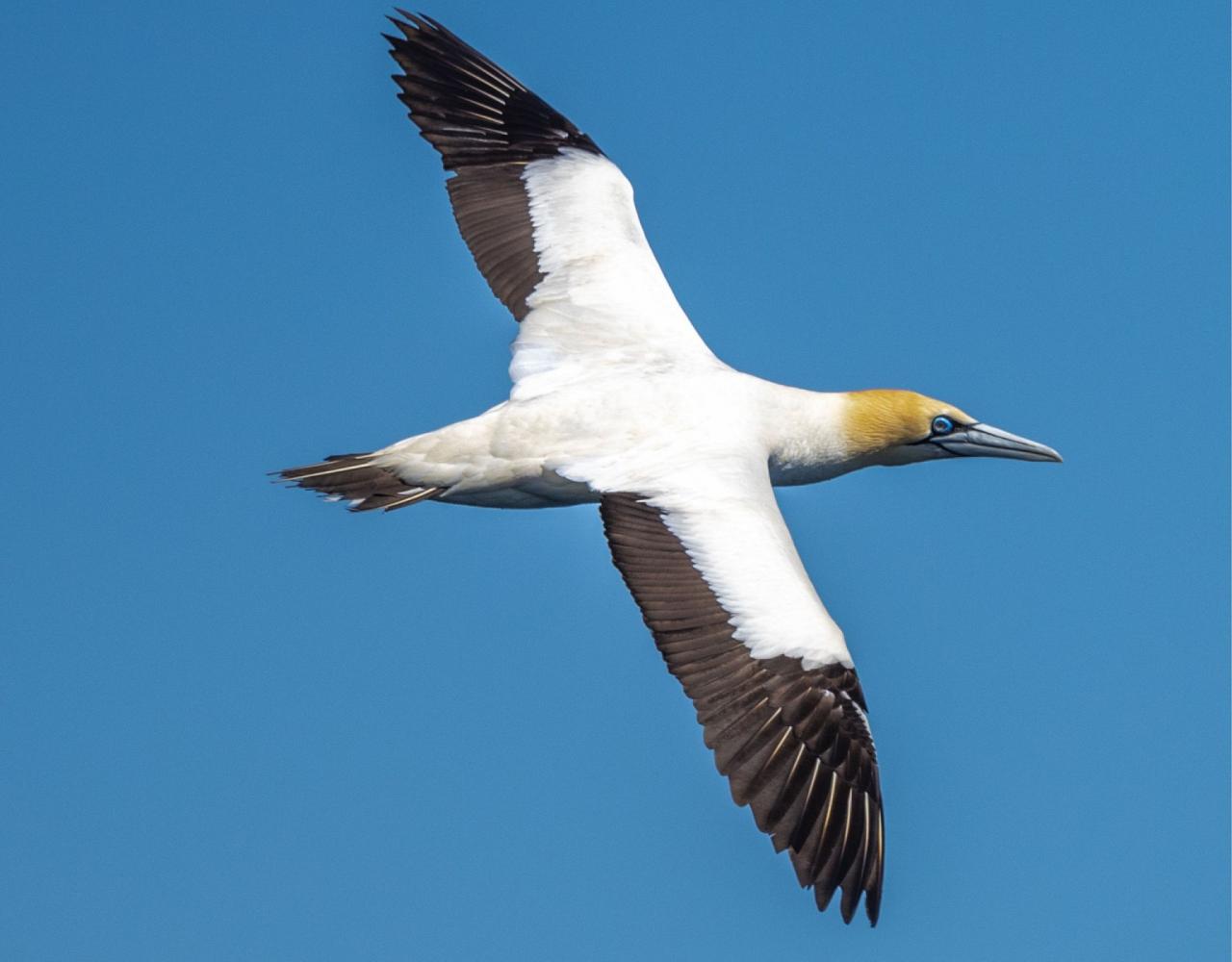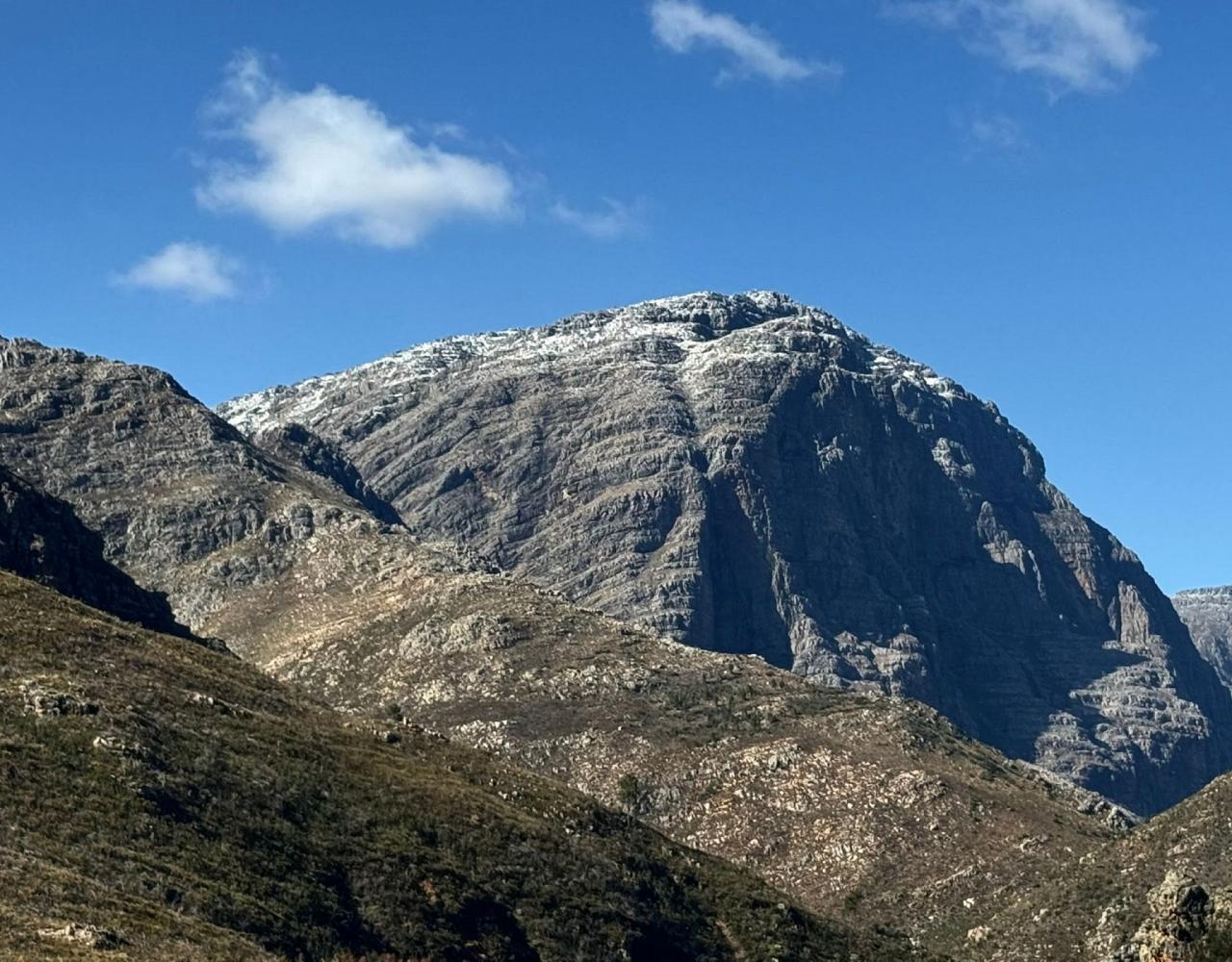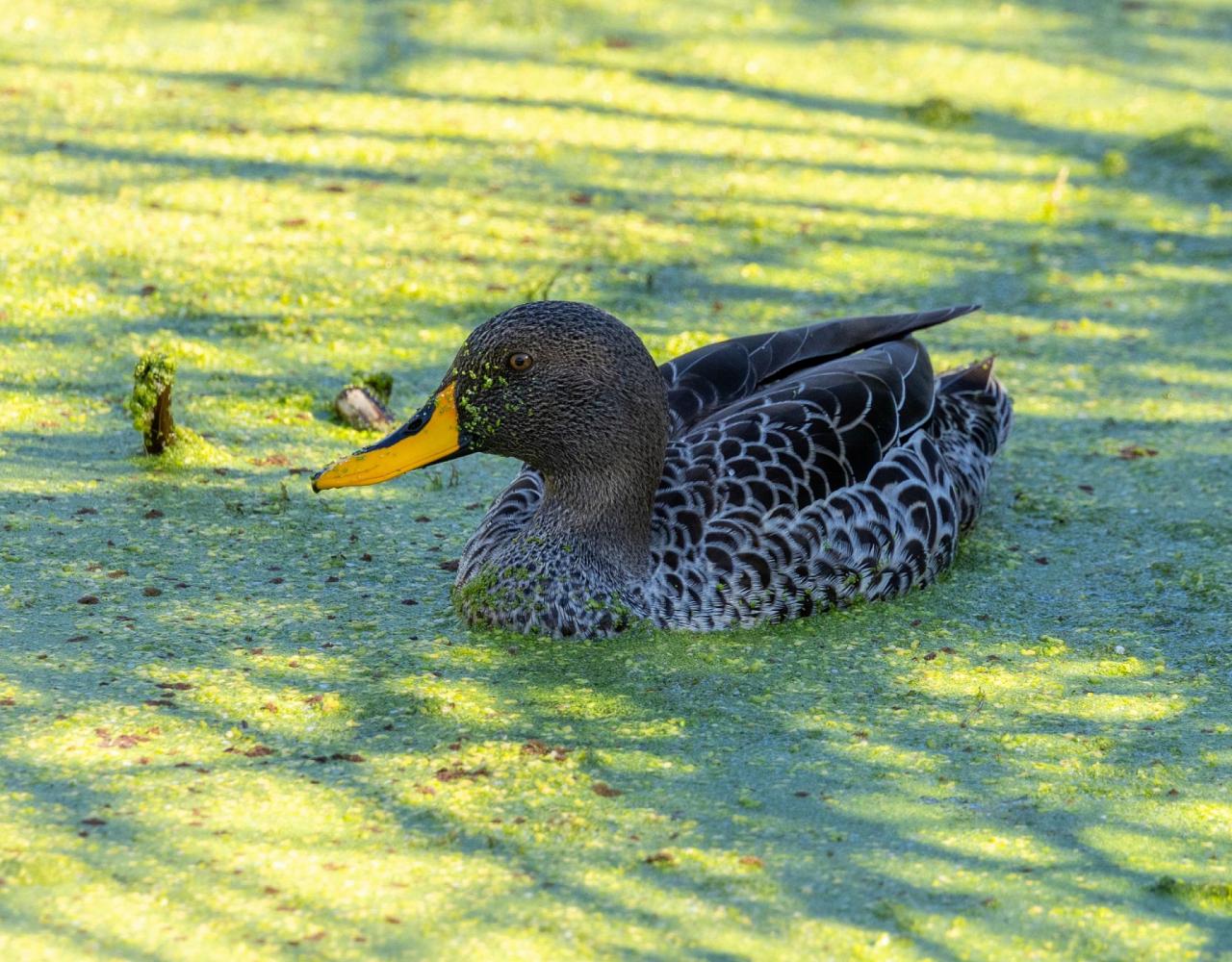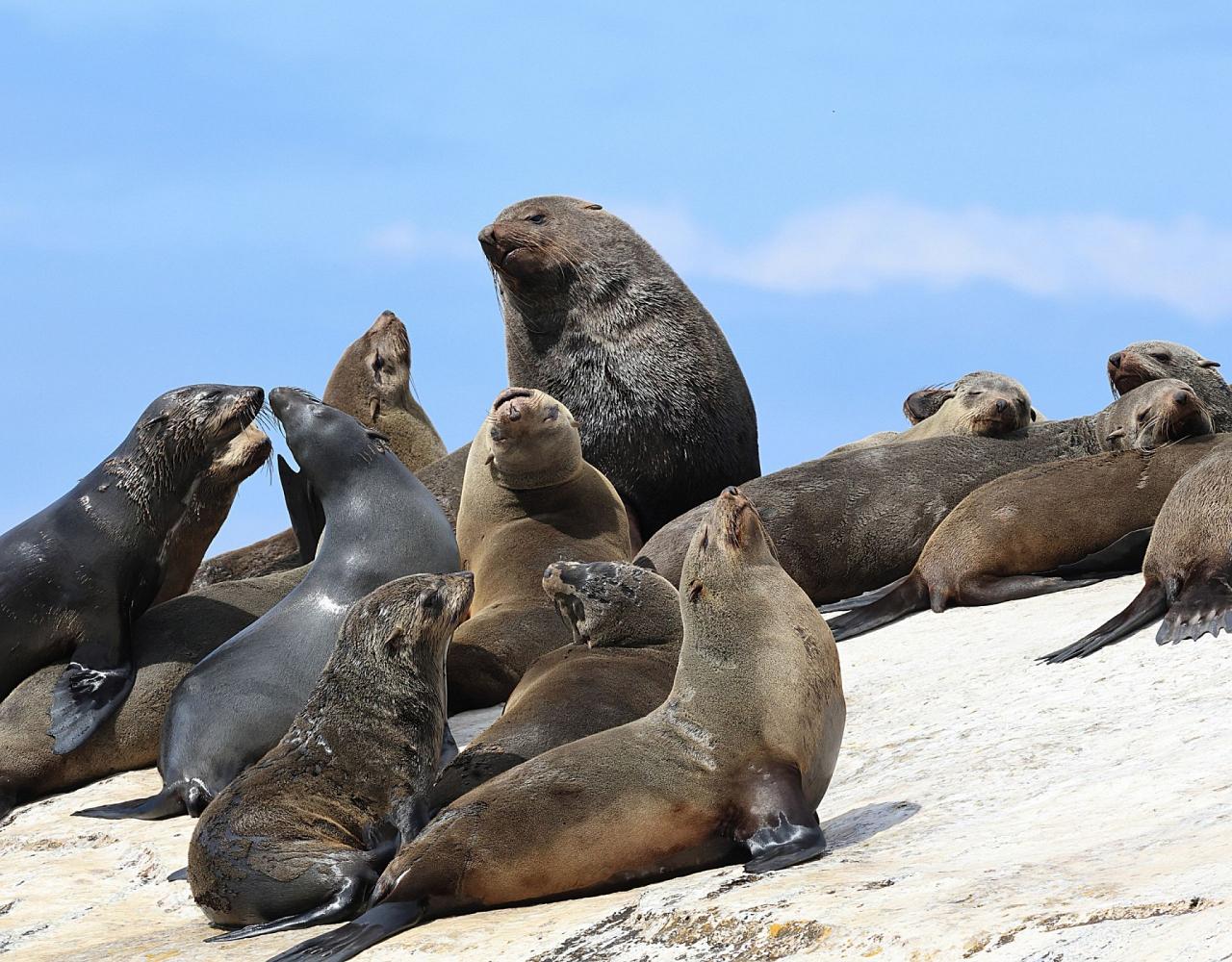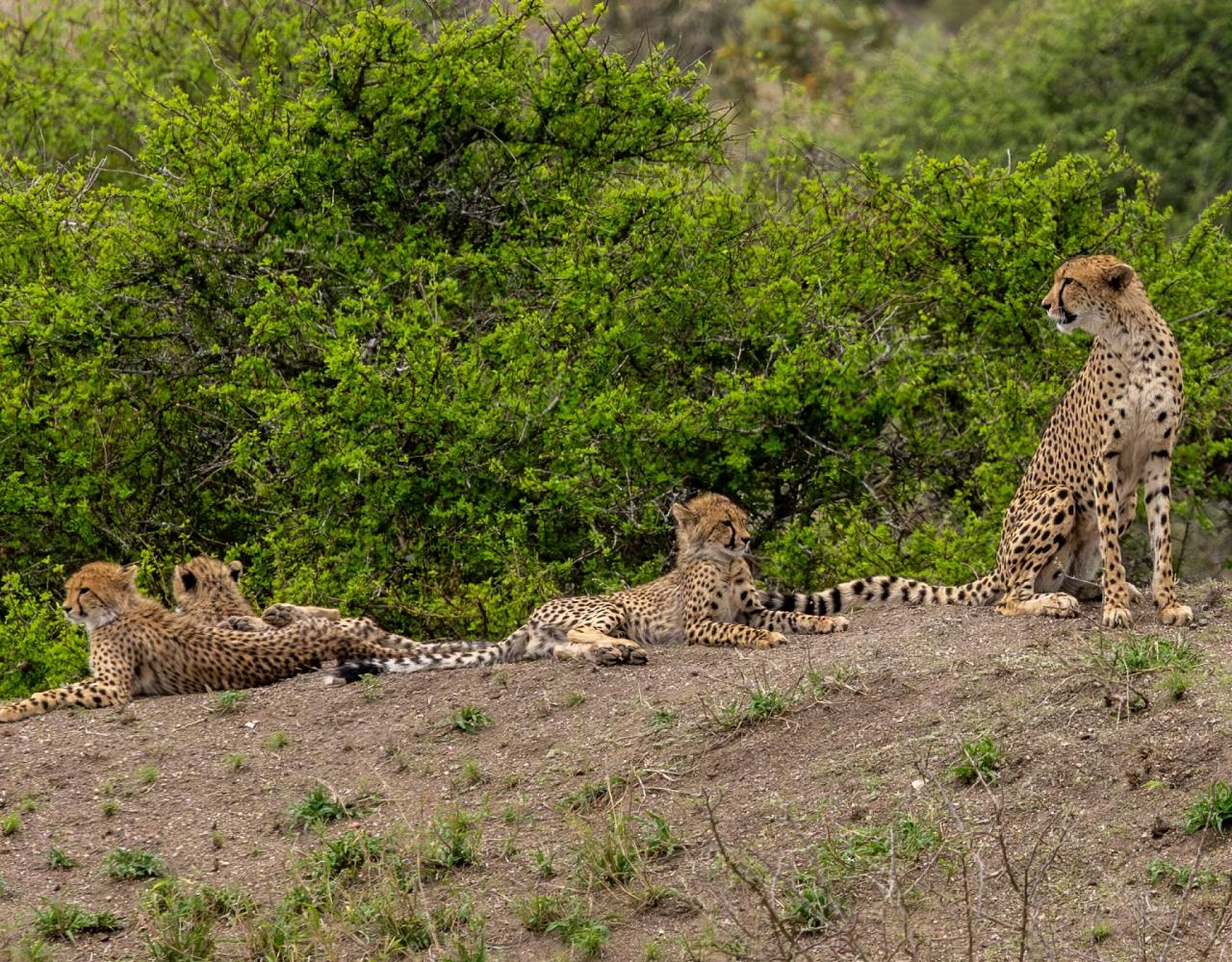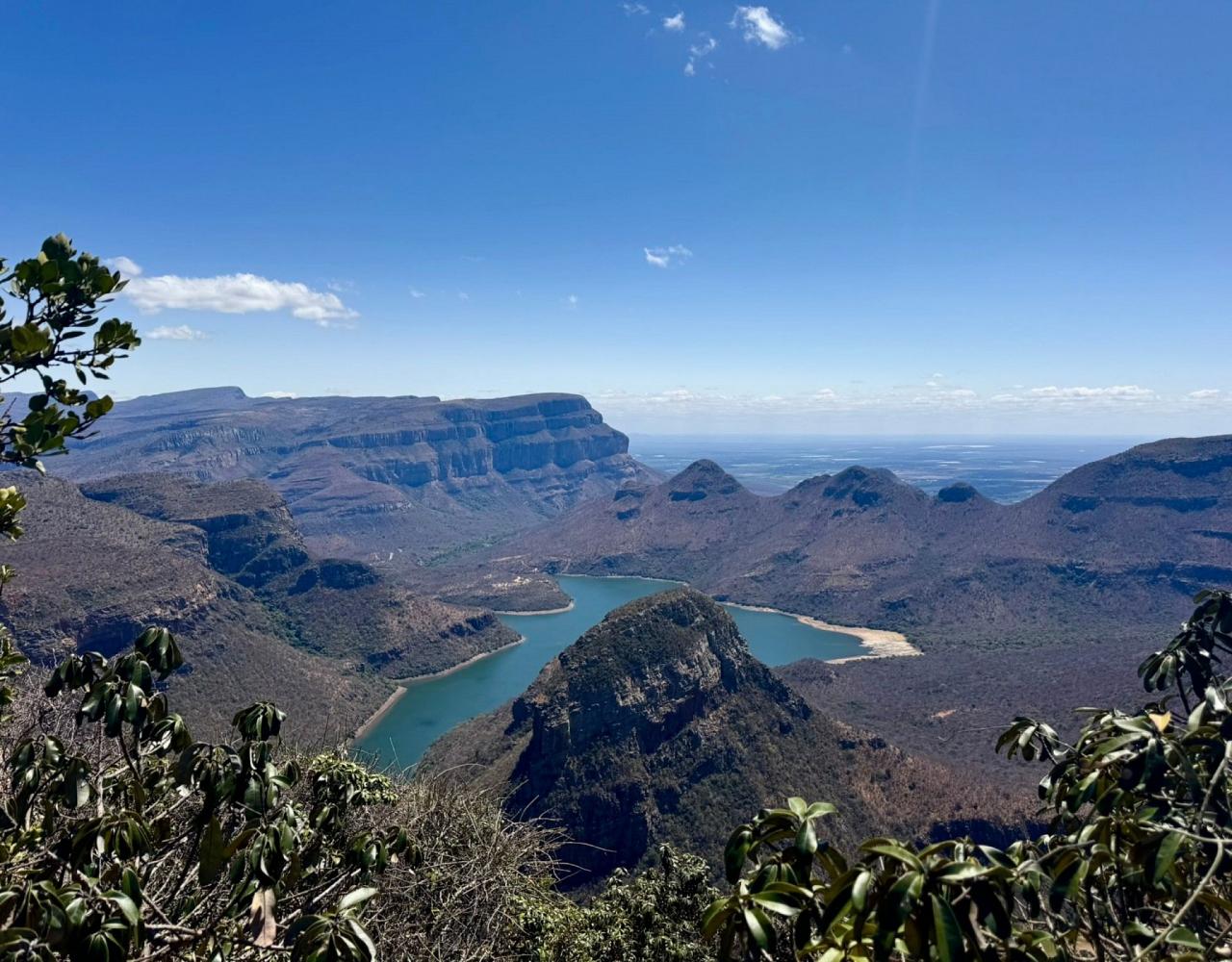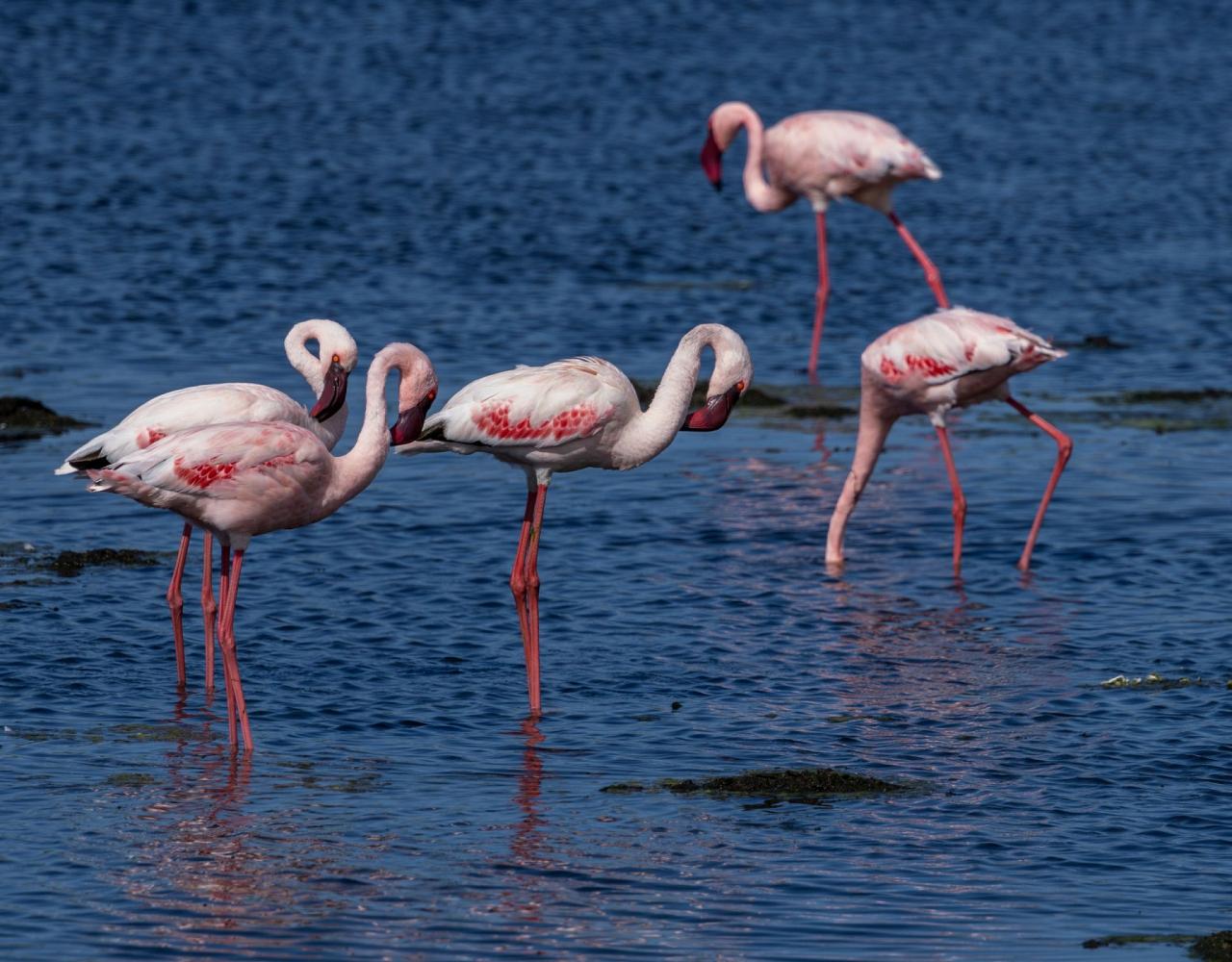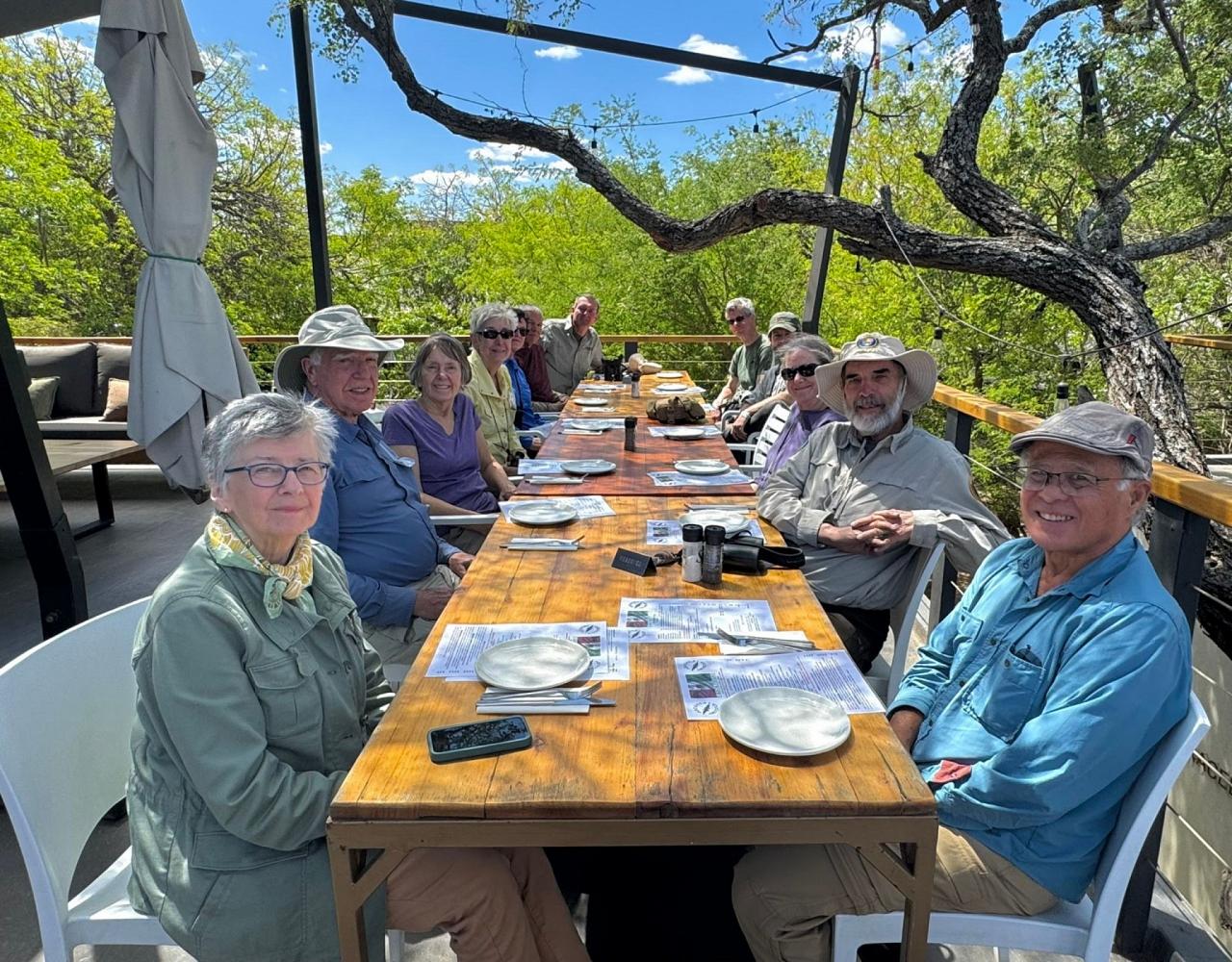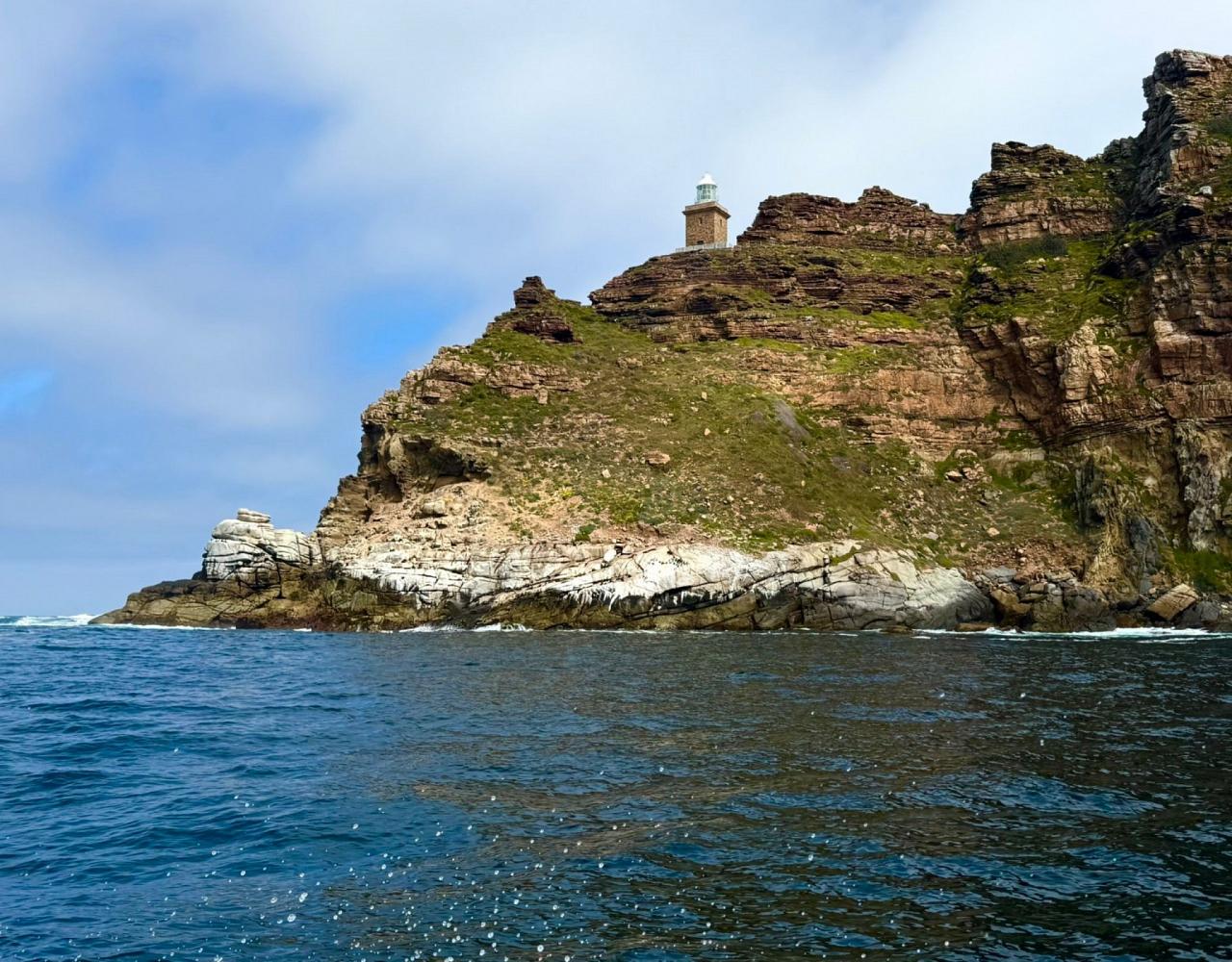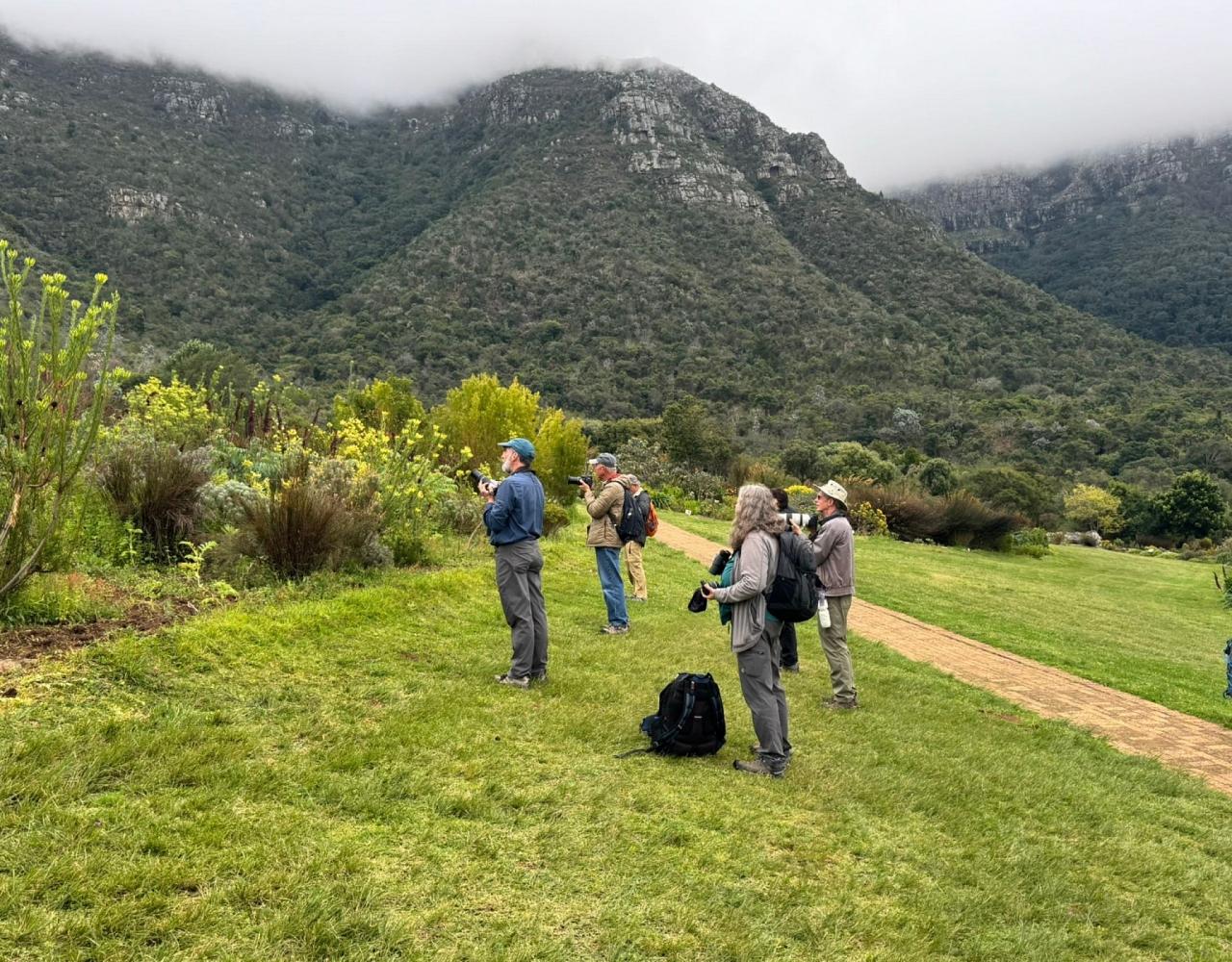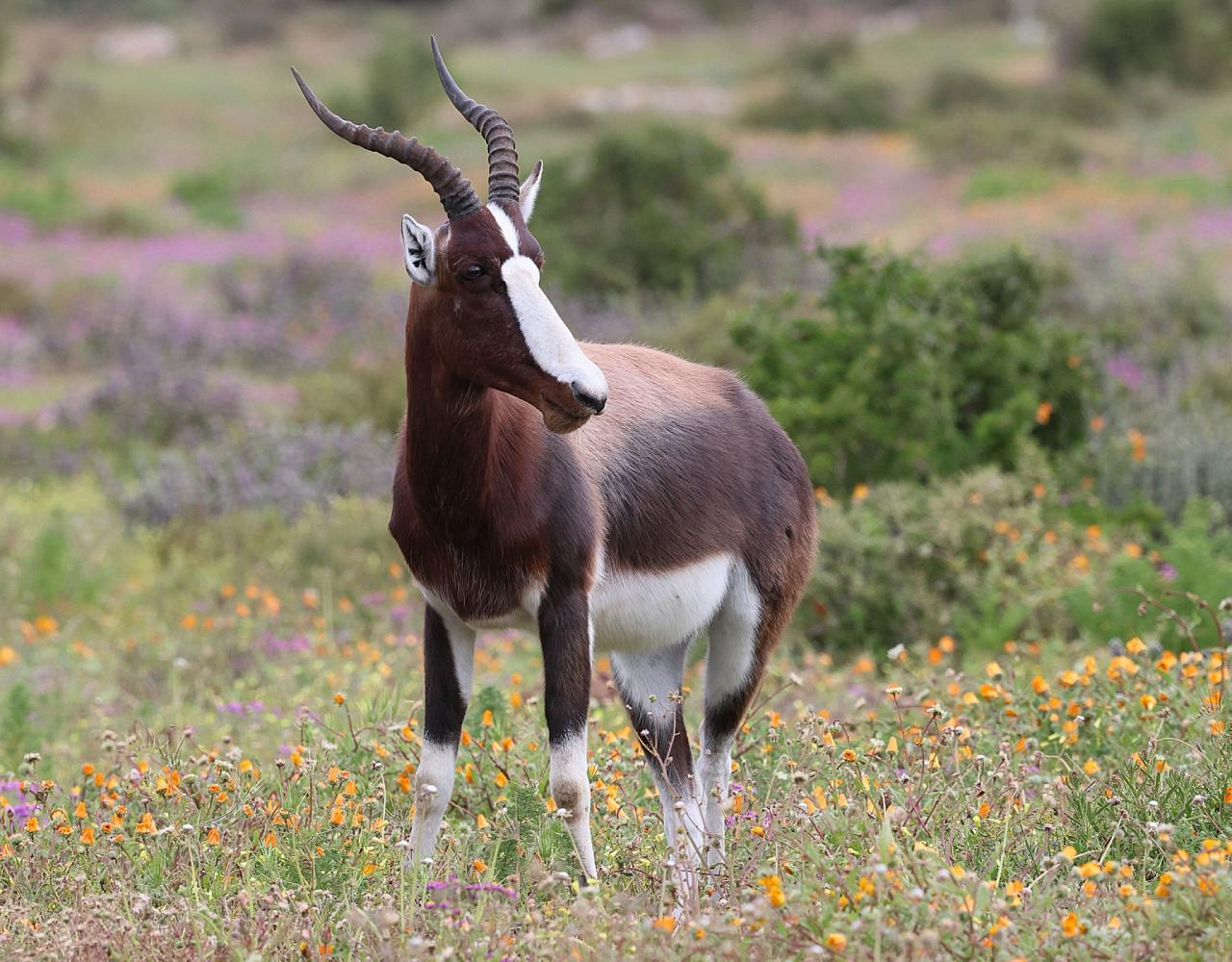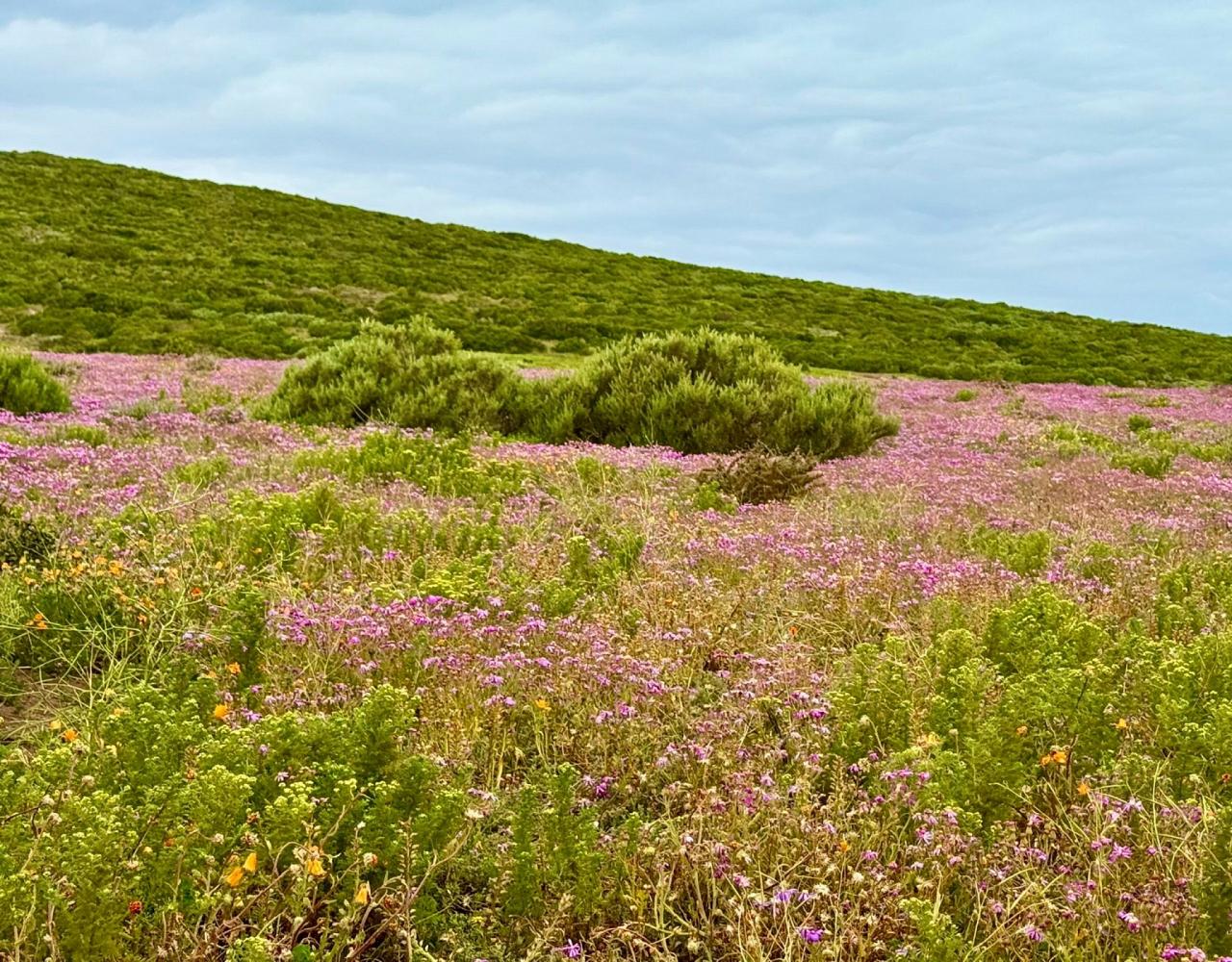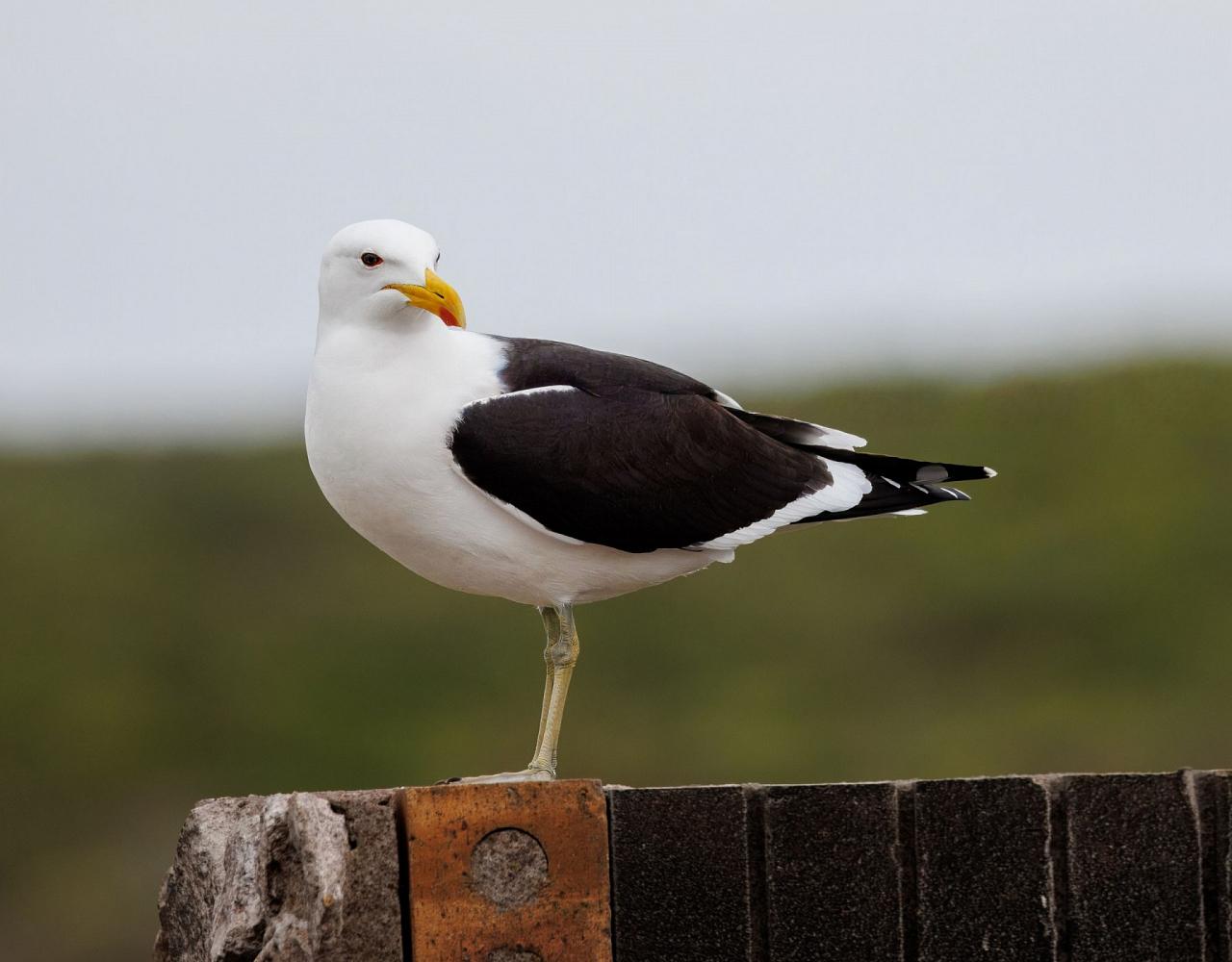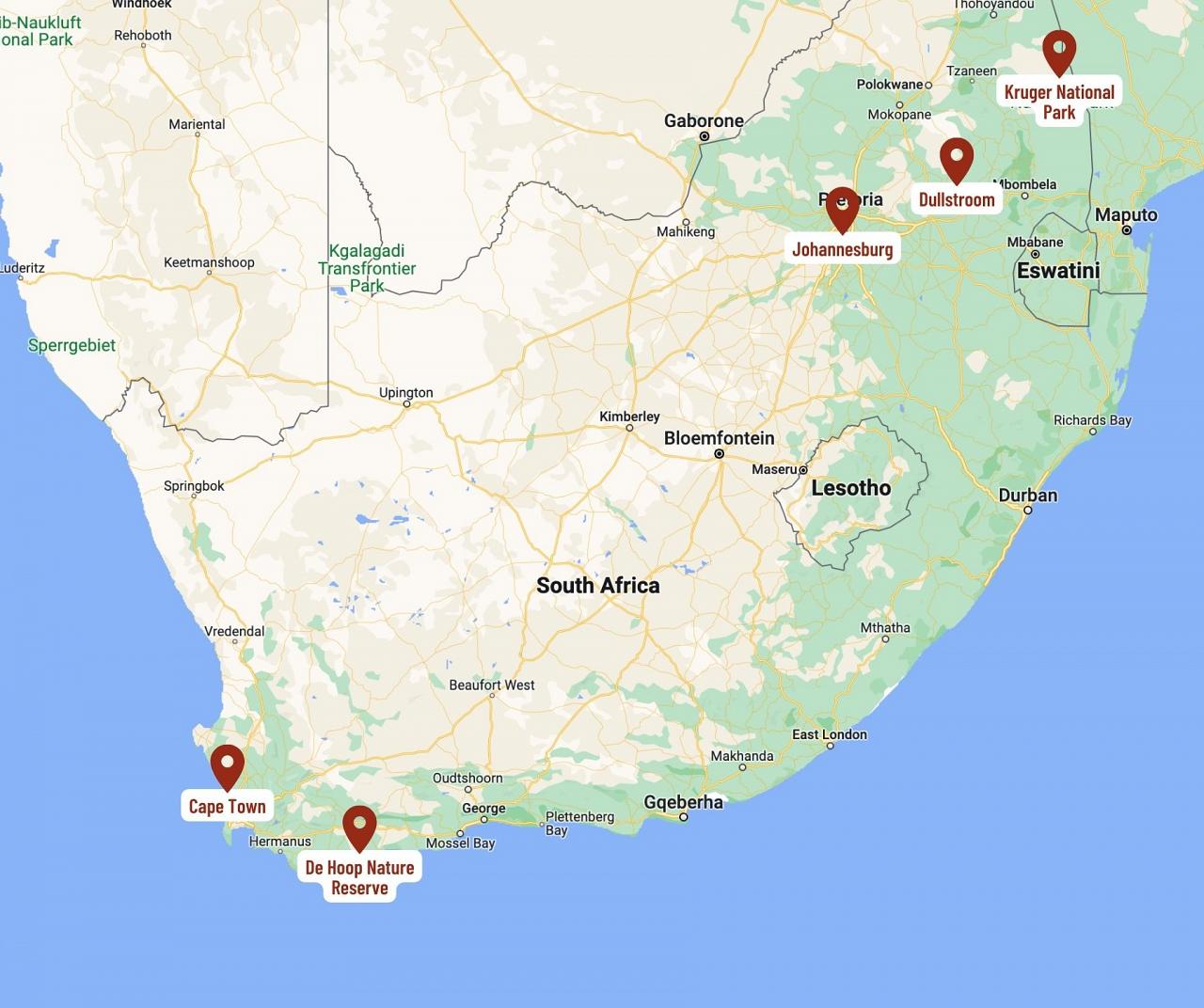- Overview
- Full Itinerary
- Photo Gallery
- Costing
- Travel Details
- Trip Reports
- Guide
- Map
- Know Before You Go
Designed to pair with our Namibia tour! Book both tours and we'll cover your hotel night between trips, up to $300.
South Africa: Ranked sixth out of the world’s seventeen mega-diverse nations. An incredible country that supports over 13,000 endemic plants, 69 endemic birds, and 300 species of mammals … and is a country we think should definitely be on every nature enthusiast’s bucket list!
This South African wildlife safari is set up as a “sampler” trip. We fly and drive over a great cross-section of the country to witness its biodiversity highlights: From the Western Cape’s amazing endemism, which holds the world-famous and flower-rich fynbos biome, seabird-filled oceans, to Kruger National Park and its species-rich grasslands and mammal-rich savannas. In between, we visit the northern Drakensberg escarpment, with its higher rainfall Afromontane forests, tropical climate, and tall mountains.
This tour also offers some of Africa’s most comfortable and productive birding in beautiful natural surroundings. With its famously high endemic count and good infrastructure, South Africa allows for an easy introduction to Africa’s birds and iconic big mammals, adding in just a few of the tricky specialties and localized endemics. Add a dash of fine weather, good food, great local wines, and impressive African mammals, and you’re in for a real treat.
This itinerary gives us great chances to see many of South Africa’s sought-after bird species and regional specialties, plus a wide variety of Africa’s mammals and reptiles, all while visiting some of the world’s most unique biomes.
Our hand-picked and comfortable (and sometimes luxurious) accommodations are in the middle of these remarkable animals and habitats, and we can promise you will not be disappointed!
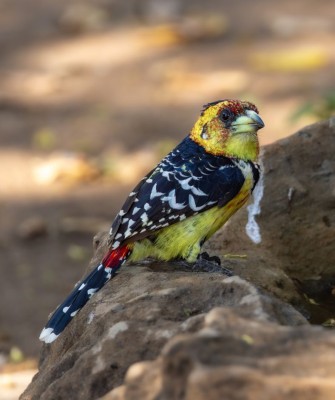
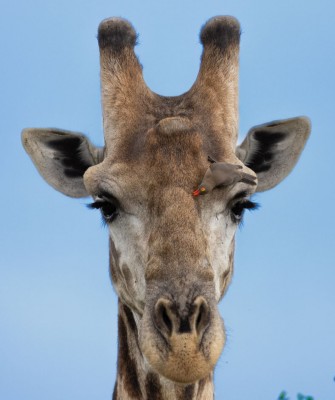
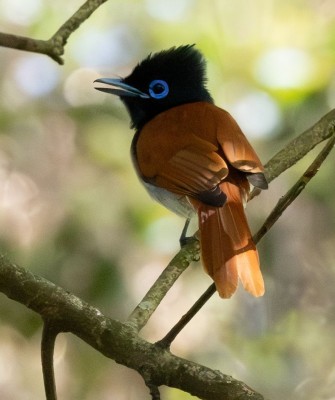
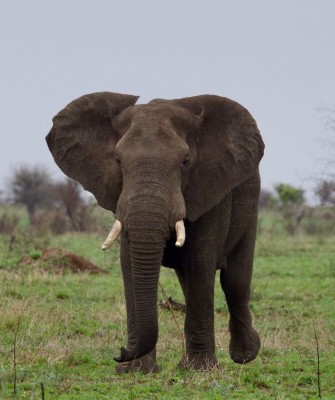
Tour Highlights
- Enjoy unique species with expert guides in some of Africa’s finest parks and habitats
- Embark on a day-long boat trip out into the seabird-rich waters off the coast of Cape Town (weather-permitting)
- Visit Kruger National Park, Africa’s most wildlife diverse preserve, for fine examples of mega-fauna including big cats, elephants, and more
- Discover signature birds like Cape Rockjumper, Cape Sugarbird, African Penguin, Blue Crane, Saddle-billed Stork, Malachite Sunbird, Lappet-faced Vulture, Bateleur, Kori Bustard, and Southern Ground Hornbill
- Experience the peak wildflower bloom at one of the world’s most diverse biomes in the Cape region
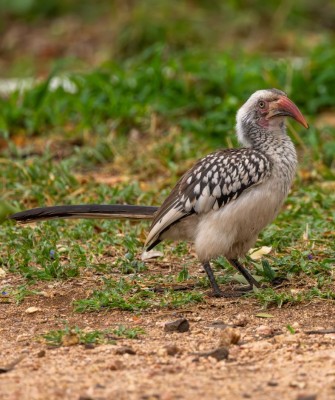
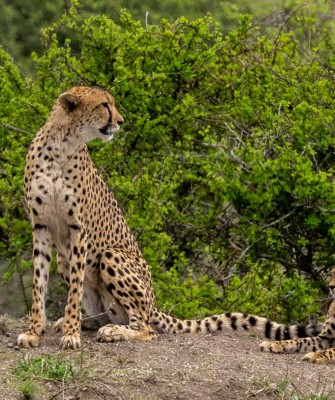
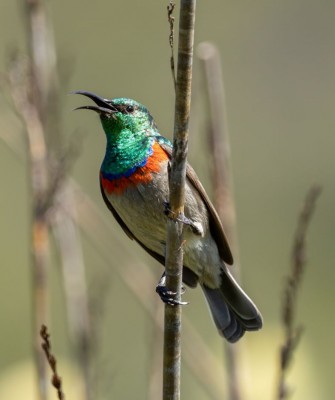
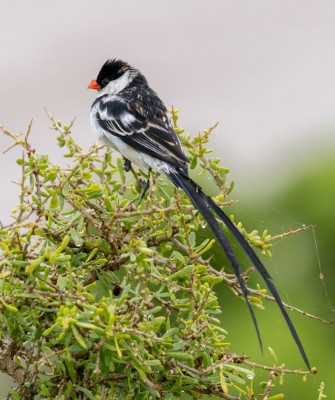
Trip Itinerary
Itineraries are guidelines; variations in itinerary may occur to account for weather, road conditions, closures, etc. and to maximize your experience.
Sat., Sept. 19 Arrive in Cape Town
Nearly all flights into Cape Town originate in Johannesburg (“Joburg” to locals), South Africa, so please plan your flights from the USA to arrive in Cape Town today (there are direct flights from Atlanta). A representative from our host company, Birding Africa, welcomes you as you arrive at the Cape Town airport, then you transfer and check into our guest house. Given that folks arrive throughout the day, dinner is at your leisure tonight. However, those arriving in time may certainly gather together (although some may just head off to sleep!). We recommend booking an extra night and coming in on September 18 to rest up from your flights our lodgings are a great choice for this.
Accommodations: A lovely guest house in Cape Town
Sun., Sept. 20 Cape Town | Kirstenbosch Botanical Gardens | Strandfontein Wetlands
Situated on the slope of towering Table Mountain National Park is the world-renowned Kirstenbosch Botanical Gardens. The Cape Fold Mountains and the Atlantic Ocean provide a spectacular backdrop to this endemic-filled plant community. One of the most pristine botanical gardens in the world, this park abuts the wilds of the national park and provides easy access to many of the endemic plant and bird species of the area. Iridescent Malachite Sunbirds, Swee Waxbill, Pin-tailed Whydah, Cape Canary, Sugarbird, and Olive Thrush are some of the species we should see here. All of this mixes perfectly with both natural plantings and planted areas, complete with Proteas, Leucadendrons, and hundreds of other plants that are found in one of the most restricted, diverse, and rare biomes in the world.
Today we also visit Strandfontein wetlands, which are home to swathes of Greater Flamingo, and three species of ibis: Hadeda, Glossy, and African Sacred. Great White Pelican, Hottentot Teal, Maccoa Duck, Black Crake, Water and Spotted Thick-Knees, and other waterfowl should also be present. We also look for White-throated Swallow and Levaillant’s Cisticola near these wetlands.
We return to our guest house for a relaxing evening.
Accommodations in Cape Town (B,LD)
Mon., Sept. 21 South of Cape Point Pelagic Trip | African Penguin
We start the morning by boarding our pelagic boat in Simonstown Harbour and heading out through False Bay. Here we observe Cape Fur Seal, Hartlaub’s Gull, and all four cormorant species: Bank, Cape, White-breasted, and Crowned. At any point on this boat trip, we have a chance of seeing Southern Right and Humpback, and other whale species (Killer Whales if we are very lucky). The landlord of South Africa’s southern seas, the Great White Shark, is common in these waters but we would have to be very lucky to see one.
Further out we should start seeing different albatross, petrels, and shearwaters (Shy, Indian Yellow-nosed, Southern Royal, Northern Giant Petrel, White-chinned Petrel, Wilson’s Storm Petrel, and Sooty Shearwater). On a clear day, the scenery from the boat is stunning with the Cape Mountains and the Cape of Good Hope standing boldly against the sky.
We finish the day by visiting a colony of African Penguins. This species uses coastal dunes to excavate burrows where they raise their two young. Our timing of the trip should allow us to see some of the first young to emerge from the nest.
This section of rocky coastline is also a place where Rock Hyrax are present. They utilize the rocky outcrops of the coastline (above high tide) for their denning sites. They cute little mammals superficially resemble marmots, but are actually the closest living relative to elephants and manatees!
Accommodation in Cape Town (B,L,D)
Tues., Sept. 22 West Coast National Park
The still, aquamarine seas of Langebaan Lagoon adjacent to West Coast National Park are home to many of South Africa’s shorebird species. It is also an area where some of the nation’s best wildflower displays take place.
The mudflats and water treatment plant in the area provide great habitats where we hope to find Curlew Sandpiper, Little Stint, Black-winged Stilt, and maybe Marsh Sandpiper as we scan through the flocks of shorebirds. And there is always a chance of finding the less common White-fronted Plover, Chestnut-banded Plover, and the scarce Terek Sandpiper. South African Shelduck and Yellow-billed Duck are just two of the many species that we should find in this water-based area.
West Coast National Park’s grasslands are interspersed with low-lying granite outcrops. This is ideal habitat for Black Harrier, Southern Black Korhaan, and Cape and Grey-winged Francolins. Other species we look for include: Karoo Robin, Chestnut-vented Titbabbler, Layard’s Titbabbler, Gray-backed Cisticola, Common Fiscal Shrike, Cape Wagtail, and Bokmakierie.
Our visit to these grasslands in September coincides with the Western Cape’s spring wildflower bloom. Annuals such a Gazanias, and bulbs including Ornithogalum and Lachenalia, are common in a riot of color.
Accommodations in Cape Town (B,L,D)
Wed., Sept. 23 Overberg | Agulhas Plains | De Hoop Reserve
To the east, between Cape Town and the Agulhas Plains lies the Hottentot Holland Mountains. We start our day with a stop in these sandstone mountains, birding the diverse fynbos biome to look for two of the country’s most iconic endemics: Cape Rockjumper and Cape Sugarbird. While descending the mountains towards the plains, we soak up the impressive landscape and look for Cape Siskin, Orange-breasted Sunbird, Cape Bulbul, the skulking Victorin’s Warbler, and confiding Cape Spurfowl. The fynbos along this part of the trip are more diverse than those to the west, given the higher accumulation of rain and moderate temperatures. We spend some of our road time to the plains exploring this biome.
As we drop down into the Agulhas Plains we look for soaring Cape Vulture. Potberg Mountain has the only nesting colony of this species in the Western Cape, so today and tomorrow are our best chances to find this species. As we enter the plains, we start looking for South Africa’s national bird, the elegant Blue Crane. The wheat fields lead into native habitats where the crane, Capped Wheatear, Denham’s Bustard, and Agulhas Long-billed Lark are found.
We are also on the lookout for the increasingly rare Bontebok and Cape Mountain Zebra, along with some of the area’s numerous species of tortoises as we drive through this habitat. Yellow Mongoose is also found here, with another larger mammal: The Eland. We have plenty of opportunities to find and then photograph these different species today.
Accommodations at the De Hoop Nature Reserve (B,L,D)
Thurs., Sept. 24 De Hoop Nature Reserve | Koppie Alleen
We might begin the day near the reserve headquarters, nestled in a thicket of dense and gnarled milkwood. Here we look for Bar-throated Apalls, Sombre Greenbul, and Southern Boubou. Thickets at the base of the mountain are home to the Southern Tchagra and Knysna Woodpecker, and the wildlife mentioned above. Next to the headquarters is De Hoop Vlei, a large, irregularly shaped lake that can at times hold huge numbers of waterfowl. We look for pairs of Great Crested Grebe, a very desirable and attractive species.
We finish the day looking for Southern Right Whale off the coast of Koppie Alleen. These spectacular, and once rare whales use the warmer waters off of South Africa to give birth and mate. All of this goes on within a few hundred yards of the coast, making for spectacular views!
Accommodations at the De Hoop Nature Preserve (B,L,D)
Fri., Sept. 25 South Coast to Cape Town
We spend today searching different sections of the South Coast for shorebirds, seabirds, and marine mammals. We also have opportunities to look for and find any of the missing specialties we might have missed in the previous three days.
More Southern Right Whales and Cape Fur Seals should be seen offshore as we drive this dramatic section of South Africa’s Coast. Different cormorant nesting colonies are visible in some of the bays that make up this geologic tapestry, and then there are the sandy stretches of beach. Oh yes, and more opportunities to observe African Penguin! Combine this with looking for land birds around coastal oases, and it is a fine way to spend our last day in this remarkably diverse part of the world.
Accommodations in Cape Town (B,L,D)
Sat., Sept. 26 Johannesburg | Dullstroom
Mid-morning finds us at the Cape Town Airport boarding our flight towards Kruger National Park. It is not a long flight (two hours), but we do have the advantage of seeing these different parts of the country from the plane. Arid environments speak to the dryness of the interior of the country. We land in Joburg around noon and then proceed to lunch before starting the afternoon drive to Dullstroom and our evening’s lodging.
Most of the habitat we pass through on our two to three-hour drive is higher elevation grassland. Mixed in with these grasses are native Campanulas and daisies, all adding to a diverse palette for birding. Birds of this habitat should include both Grey Crowned Cranes, and hopefully some of the resident passerines (Long-tailed Widowbird, pipits, and larks) we search for tomorrow. Although wildlife is not as plentiful or diverse as we find in Kruger, we do look for Rhebuck, Steenbok, and Duiker. Our arrival is around dinnertime, which gives us a little time to explore or relax at our lodging.
Accommodations at Dullstroom (B,L,D)
Sun., Sept. 27 Dullstroom | Drakensberg
We spend the morning birding the areas around Dullstroom with the intent of finding Wing-snapping and Pale-crowned Cisticolas, Sentinel Rock-Thrush, Mountain Wheatear, and hopefully Ground Woodpecker! The higher elevation grasslands should give us opportunities to see Gurney’s Sugarbird and to find three endemics — Yellow-breasted Pipit, Red-winged Francolin, and Eastern Long-billed Lark. Walking and birding the grasslands could turn up many other species that get flushed and take flight.
Our afternoon is spent driving up and on to the Great Escarpment. The escarpment runs the width of South Africa. Enjoy stunning views and some remarkable geology. We arrive in time for dinner and then relax afterwards as we are treated to the incredible nocturnal sounds while viewing the Southern Cross star constellation that lies low in the horizon.
Accommodations at Mount Sheba Private Reserve (B,L,D)
Mon., Sept. 28 Afromontane Forest of Mount Sheba
This is a new habitat for many! Afromontane forests are areas of higher elevation in Africa that are characterized by being forested and more mesic than surrounding low-lying drier areas with fewer trees. Afromontane forests have a higher biological diversity, and at times, a higher density than the adjacent low-lying areas. One of South Africa’s better escarpment forest and grassland sites is Mount Sheba, which offers easy access to some excellent Afromontane forest birding. Here we listen for mixed foraging parties: Yellow-throated Woodland-Warbler, Terrestrial Brownbul, Cape Batis, Olive Woodpecker, White-starred Robin, Chorister Robin-chat, Green-backed Cameroptera, Bar-throated Apalis, Olive Bush-Shrike, and Forest Canary. On the leafy forest floor, we look for Orange Ground Thrush and Lemon Dove. Bush Blackcap sometimes appear along the forest fringes.
The gardens surrounding our lodge support both Greater and Southern Double-collared Sunbirds. We also look for groups of the locally threatened Samango Monkey, and any of the fifteen different species of dwarf chameleon found across South Africa.
Accommodations at Mount Sheba Private Reserve (B,L,D)
Tues., Sept. 29 – Fri., Oct. 2 Kruger National Park
We start the day by descending Mount Sheba and heading east to Kruger National Park, the most wildlife diverse of any preserve on the continent of Africa! Part of that diversity is due to the over five hundred different bird species we hope to have the chance to sort through. We reach Kruger after a magnificent drive through the scenic Blyde River Canyon and take a short detour to look for the smart little Taita Falcon.
And then we arrive at this world-renowned park, where we spend the first two nights at a rest camp in Central Kruger and the second two nights at a rest camp in the Southern part of Kruger. The rest camps serve us well for location, being deep in the park. They host comfortable casitas with private bath and the grounds are very birdy, with trees and oasis-like conditions.
Our first full day is spent in savannah and riverine woodland, viewing wildlife and birding. We are always on the lookout for Kruger’s “Big Five”: Lion, White Rhinoceros, Elephant, Leopard, and African Buffalo, which are the more famous of the reserve’s mammals. Other big game viewing might include Wild Dog, Cheetah, Giraffe, and Spotted Hyena.
But there is just so much more wildlife that causes us to stop, including the “Little Five”: Ant Lion, Rhinoceros Beetle, Elephant Shrew, Leopard Tortoise, and Buffalo Weaver. We stop often, scan extensively, and seek out wildlife not easily visible while driving on our safari (yes, we even feature butterflies and dung beetles!).
Included in the bird richness are nine species of cuckoo, five species of roller, six species of hornbill, nine species of kingfisher, five species of vulture, and at least eight eagle species of eagle: Brown- and Black-chested Snake Eagles, African Fish Eagle, African Hawk Eagle, Bateleur, Martial, and Tawny Eagles.
Other species we look for include Shelley’s Francolin (one of the nine species found here), Purple-crested Turaco, Red-capped Robin-Chat, Lesser Honeyguide, Red-crested Korhaan, Golden-breasted Bunting, Bennett’s Woodpecker, Saddle-billed Stork, Gorgeous Bushshrike, African Palm Swift, Yellow-throated Pretonia, Green-backed Cameroptera, and others.
We take a drive after dark one evening, which should hopefully give us views of some of the nocturnal species that are out and about, like Pearl-spotted Owlet, Fiery-necked Nightjar, African Civet, Thick-tailed Bushbabies, Small-spotted Genet, and more.
The birding and wildlife viewing opportunities are exceptional here and with four days and nights spent in this park, there are plenty of stories to share around the table.
Accommodations at two popular Rest Camps in different areas of the park (B,L,D)
Sat., Oct. 3 Kruger to Johannesburg | Flights Home
We enjoy a little more birding and wildlife viewing in Kruger before turning our vehicle around and making the drive back to Joburg. With most flights back to the States leaving in the evening, we have time for a few stops as we re-trace our journey back to the airport. We hope to pick up a few more bird species, and we certainly enjoy some lingering landscapes … a fine way to finish this 15-day tour of South Africa. (B,L)
Cost of the Journey
Cost of the journey is per person, based on occupancy: $7990 DBL / $8790 SGL, from Cape Town, South Africa, departing Johannesburg. This cost includes accommodations for 14 nights, all meals as specified in the itinerary, professional guide services, internal flight, other park and program entrance fees and miscellaneous program expenses.
NEW! all tips other than your NJ guide (optional) and local guide are included (this includes tips for your driver, lodge and staff, day activities, meals and other services).
Designed to pair with our Namibia tour! Book both tours and we'll cover your hotel night between trips, up to $300.
Tour cost does not include: transportation from your home city to Cape Town and from Johannesburg, optional activities, or items of a personal nature such as laundry, telephone charges, or beverages from the bar.
Travel Details
Please plan to make air travel plans only after the minimum group size has been met. We will send you a confirmation email as soon as the trip has been confirmed.
Arrival Airport: Cape Town International (CPT)
Arrival Details: Please plan flights to arrive September 19, 2026, at your leisure. Note that you will likely need to leave the US on September 18 in order to arrive in Cape Town on September 19.
Departure Airport: O.R. Tambo International (JNB) in Johannesburg
Departure Details: Please plan flights to depart October 3, 2026, after 7:00 PM
Travel Tips: If you arrive early to rest up from your travels, we can book an early night for you at our first night tour hotel, the Greenwood Villa Guest House. It’s a peaceful place to relax after your long flight and within walking distance of shopping and dining options. They will also pick you up at the airport.
If you feel like exploring, Cape Town is full of things to do and see. There are many fascinating museums including the Cape Town Diamond Museum, the Zeitz Museum of Contemporary Art Africa, and the District Six Museum. Transportation is available via taxi or Uber. If you enjoy wine, you’re in luck because there are many wineries and vineyards just outside Cape Town that are worth a visit. There are numerous companies that offer tours or transportation to enjoy some wine tasting.
Entry Requirements: See "Essential Information" section under the "Know Before You Go” tab.
Items of Note
Tour Pace
We walk quite slowly and stop often. At Kruger National Park, wild animals preclude excursions on foot. Comfortable walking shoes are adequate for this tour.
Group Size
The minimum group size is 6 with our local expert guide; with 8 or more Naturalist Journeys sends a second guide. The maximum number of participants is 10.
Browse below for trip reports and species lists from past versions of this and other tours from this destination.
South Africa
- September 2018
- September 2019
- September 2022
- September 2023
- September 2024
- September 2025
-
Mason Flint
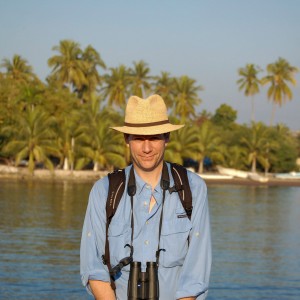
Mason is a New Mexico native who started birding at age 11 when his family moved within walking distance of the Richardson Bay Audubon Sanctuary in Tiburon, California. Here, he became an Audubon Junior Naturalist. His love of birding and travel grew through as he moved with his family to Alaska, Ohio, and Vermont, college on the east coast, and a few years trying to eke out a living as a birder/ski bum in Montana and back in New Mexico.
In desperate need of gainful employment, Mason settled in Seattle where he spent most of his career at Microsoft. Mason was able to feed his habit by adding on a day or two of birding to business trips across the US, Europe, and Asia and travel with his family. His wife Suzy, who loves travel but isn’t a birder, is a good sport and jokes that being married to a birder has given her the opportunity to visit sewage treatment ponds around the world.
Mason retired a bit early in 2015 to help fledge his two sons, squeezing in travel and birding between soccer games and band performances. He was thrilled to finally combine his passions and profession when he joined Naturalist Journeys as a consultant in early 2020. Mason has led field trips in Guyana, Peru, Iceland, Texas, Washington, Wyoming, Southeastern Arizona, Minnesota, and South Africa.Other trips with Mason Flint
-
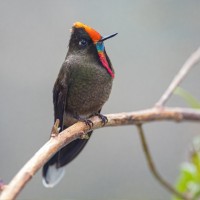 World-class Birding in Colombia's Coffee TriangleJanuary 21 - February 4, 2026, w/Montezuma extension
World-class Birding in Colombia's Coffee TriangleJanuary 21 - February 4, 2026, w/Montezuma extension -
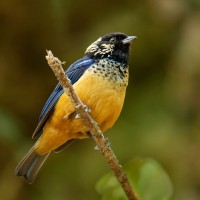 Western Panama: Tranquilo Bay Only two rooms left!March 8 - 15, 2026, w/Mt. Totumas extension
Western Panama: Tranquilo Bay Only two rooms left!March 8 - 15, 2026, w/Mt. Totumas extension -
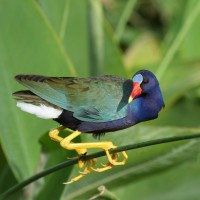 Texas Coast & Big ThicketApril 15 - 23, 2026
Texas Coast & Big ThicketApril 15 - 23, 2026 -
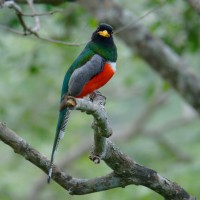 Arizona Monsoon Madness: Birding & Nature in a Season of Wonder!August 10 - 17, 2026
Arizona Monsoon Madness: Birding & Nature in a Season of Wonder!August 10 - 17, 2026 -
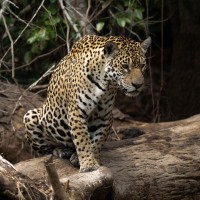 Brazil’s Pantanal: Jaguars! And More… FULL - Check out Jewels of Brazil's Atlantic Forest!October 11 - 21, 2026, w/Amazonia extension
Brazil’s Pantanal: Jaguars! And More… FULL - Check out Jewels of Brazil's Atlantic Forest!October 11 - 21, 2026, w/Amazonia extension -
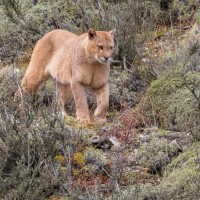 Ultimate Patagonia November 5 - 19, 2026
Ultimate Patagonia November 5 - 19, 2026 -
 Classic Alaska: Birding & Wildlife: Anchorage, Nome, Seward & Kenai Fjords Sold as a private tour.June 8 - 17, 2027
Classic Alaska: Birding & Wildlife: Anchorage, Nome, Seward & Kenai Fjords Sold as a private tour.June 8 - 17, 2027
-
Essential Information +
Pace & Protocols +
Packing List +
Suggested Reading List +
Useful Links +
Photo credits: Thumbnails: Crested Barbet (Mason Flint), Giraffe (Mason Flint), African Paradise-Flycatcher (Mason Flint), African Elephant (Mason Flint), Southern Red-billed Hornbill (Mason Flint), Cheetah (Mason Flint), Southern Double-Collared Sunbird (Mason Flint), Pin-tailed Whydah (Mason Flint) Banners: Red-winged Starling (Jim Adamthwaite), White-capped Albatross (Mason Flint), African Wild Dogs (Richard Antonelli), Lesser Flamingo (Mason Flint), Southern Ground-Hornbill Mason Flint)








